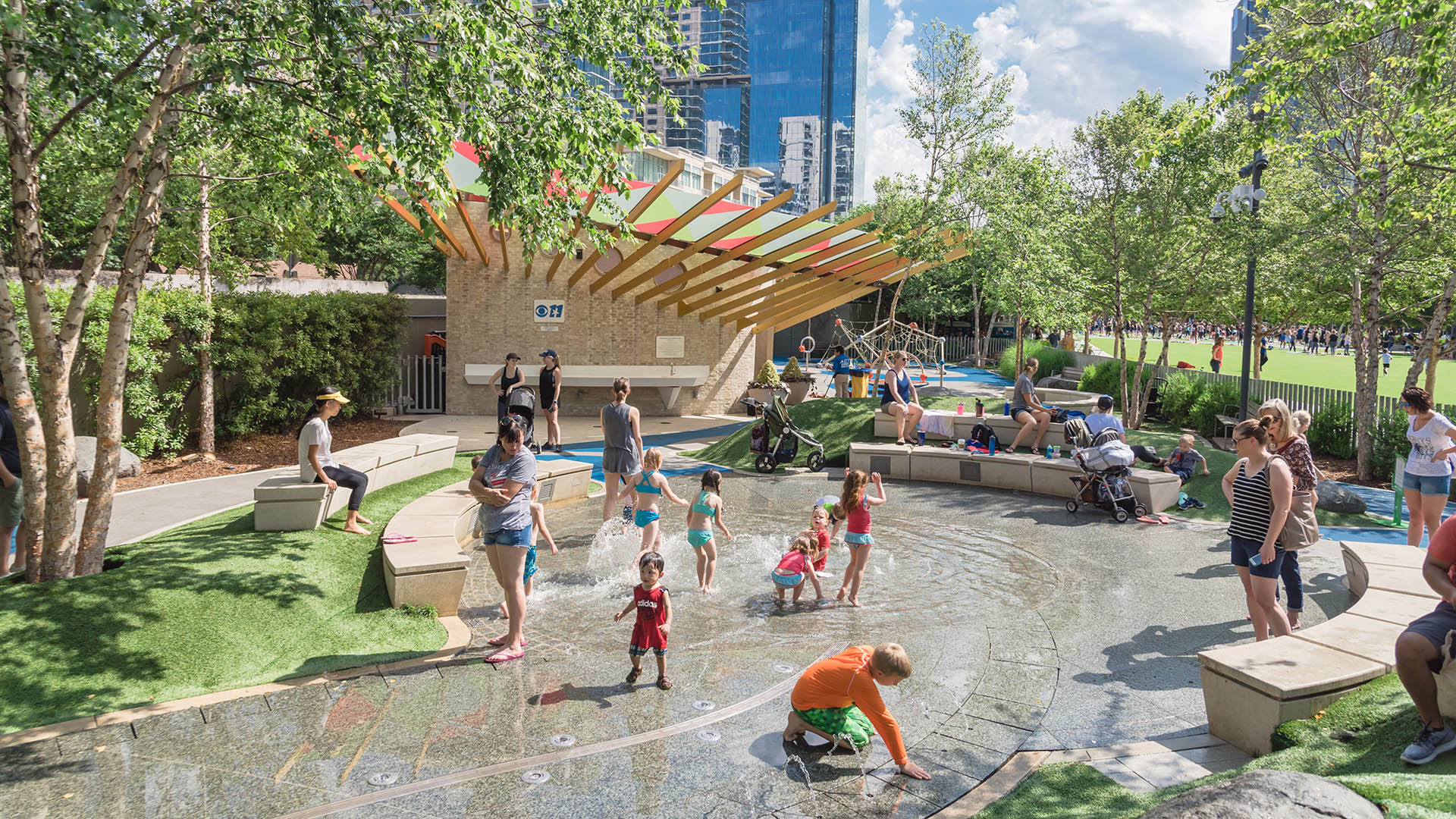TOD Standard Framework
TOD Standard Framework
The TOD Standard outlines a comprehensive framework comprising TOD principles, objectives, and metrics that define complete and inclusive urban environments for everyone. The 25 metrics together make a functional tool that can be used for assessing the TOD features of neighborhoods and projects. Each metric includes criteria, a measurement method, and a point system that anyone can use.
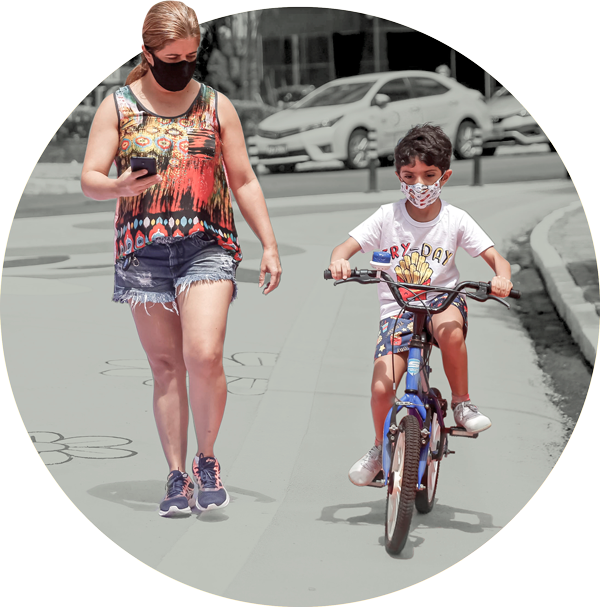
By creating places that help caregivers and young children thrive, we create conditions for healthier, more inclusive, and more accessible places for all.

Principle 1: Walk
Walking around and to essential destinations is safe, comfortable, and stimulating.

Walking is the foundation for sustainable and equitable access and mobility in a city and fundamental to the success of inclusive TOD. High-quality, unobstructed, universally accessible pedestrian infrastructure provides basic mobility for all regardless of age, economic status, or physical ability. Inviting features and design which centers around user comfort makes walking more enjoyable and gives people opportunities for interaction and community. Read more about the hierarchy of needs for walkability here.
Walking is crucial to the everyday experience of caregivers, babies, and toddlers. Safe, quick, and comfortable walking trips are necessary to give caregivers and those they care for an opportunity to reach their basic needs without a car. For time-constrained caregivers, the reliability and predictability of walking help them trip plan around the schedules and needs of babies and toddlers. Walking conditions that are inviting and safe help alleviate travel-related stress. For toddlers learning to walk, playing and interacting with caregivers, a stimulating environment affects their physical, cognitive, and socioemotional development. When the pedestrian realm is pleasant and playful, caregiver-baby routes can become destinations themselves.
Objective A:
The pedestrian realm is safe, complete, and accessible for all
The key elements of pedestrian infrastructure are walkways and crosswalks, which are fundamental to safe walking. When designed well, they create a continuous pedestrian network that is safe from cars and accessible for all people including persons with disabilities, the elderly, and caregivers walking and strolling with young children.
What it means for babies, toddlers, and caregivers:
Well-designed and maintained pedestrian infrastructure separated from vehicles is essential for the safety of babies and toddlers as they are the most vulnerable to car crashes and air and noise pollution. Wide walkways and smooth pavement with no obstructions from parked cars, debris or trash, utility poles, etc. allow safe and convenient maneuvering with strollers or walking with toddlers and other family members. Demarcated crosswalks accessible to strollers make trips safe and convenient while pedestrian refuge islands shorten the crossing distance for caregivers who are traveling more slowly with babies and toddlers before they reach a protected space from oncoming traffic.
Metrics:
Walkways should be
- Accessible for all
- At least 2m wide
- Free of obstructions
- Well-lit
- Either separated from traffic by a curb or other devices like bollards, shared and well-marked streets with vehicles at a very slow speed, or pedestrian and cycling only paths
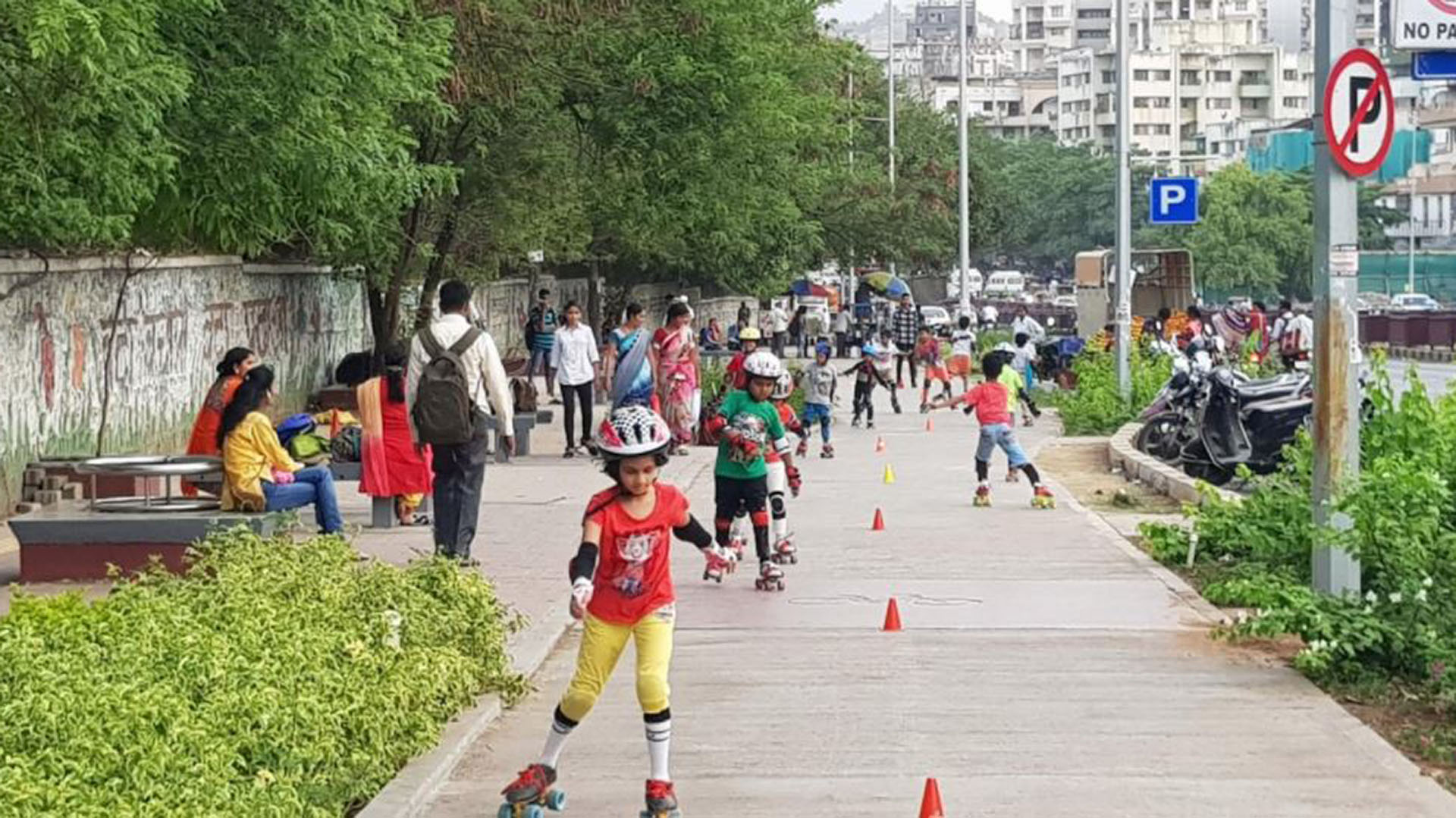
Crosswalks should be
- Safe and wheelchair- and stroller-accessible in all directions (via ramps or raised crossings)
- At all intersections with traffic exceeding 15 km/h
- Well marked, well-lit, and visible
- At least 2m wide
- No more than two traffic lanes before a pedestrian refuge
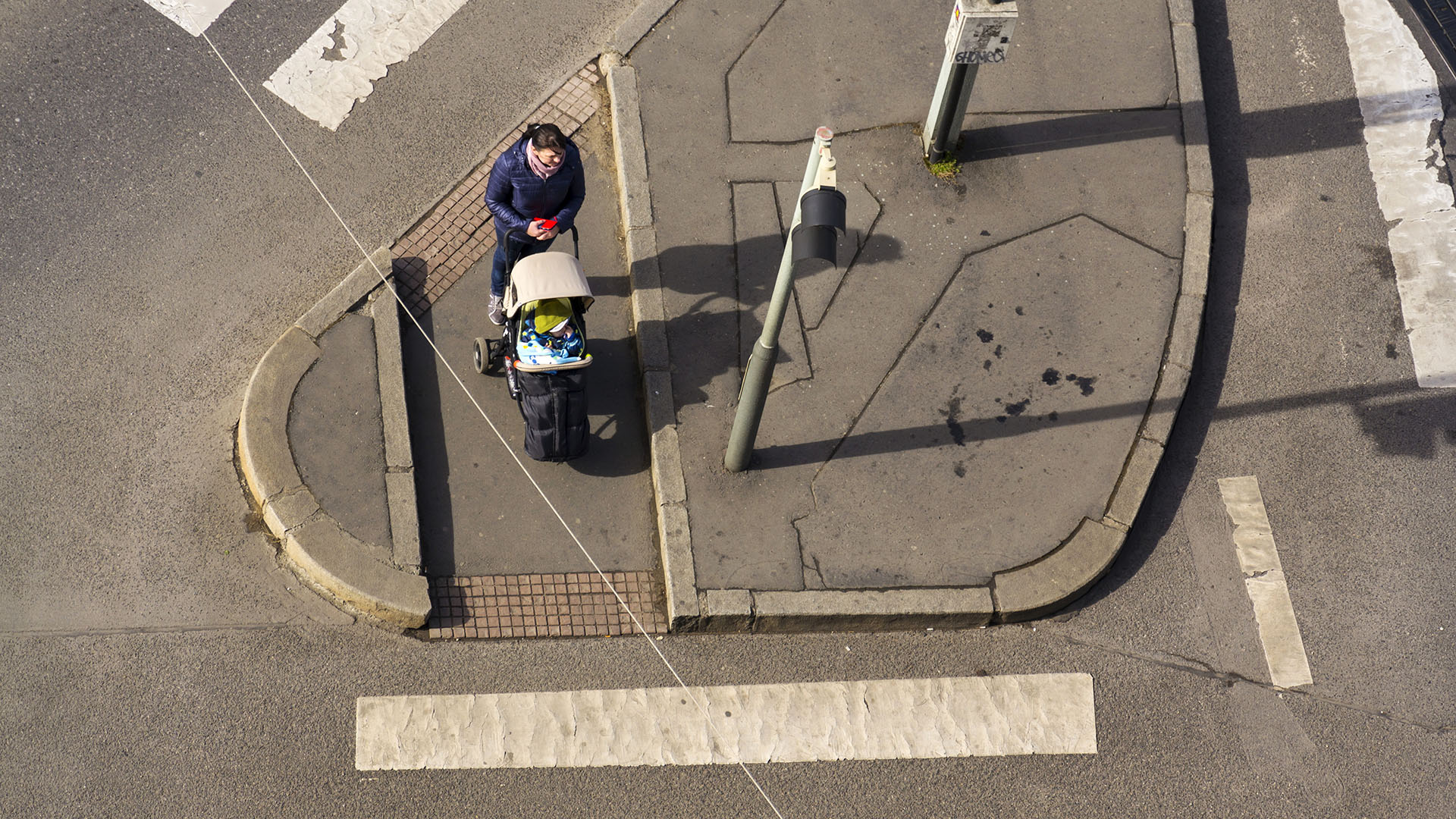
Objective B:
The pedestrian realm is active and vibrant
Activity and permeability of the street frontage create vibrancy in the pedestrian realm. Sidewalks that are populated, animated, and lined with useful ground-floor activities and services make walking more attractive and secure.
What it means for babies, toddlers, and caregivers:
For caregivers, activity in the pedestrian realm increases the sense of personal safety, especially when businesses and facilities stay active throughout the evening. Additionally, ground-floor businesses lining the street frontage create more opportunities for caregivers to find the goods or services they need. The activity in the street frontage can be also created through small rest and play nooks, with elements of nature, and art.
Metrics:
Active frontages include
- See-through glazing such as windows and openings at eye level
- Open spaces such as parks, plazas, and playgrounds visible from the walkways
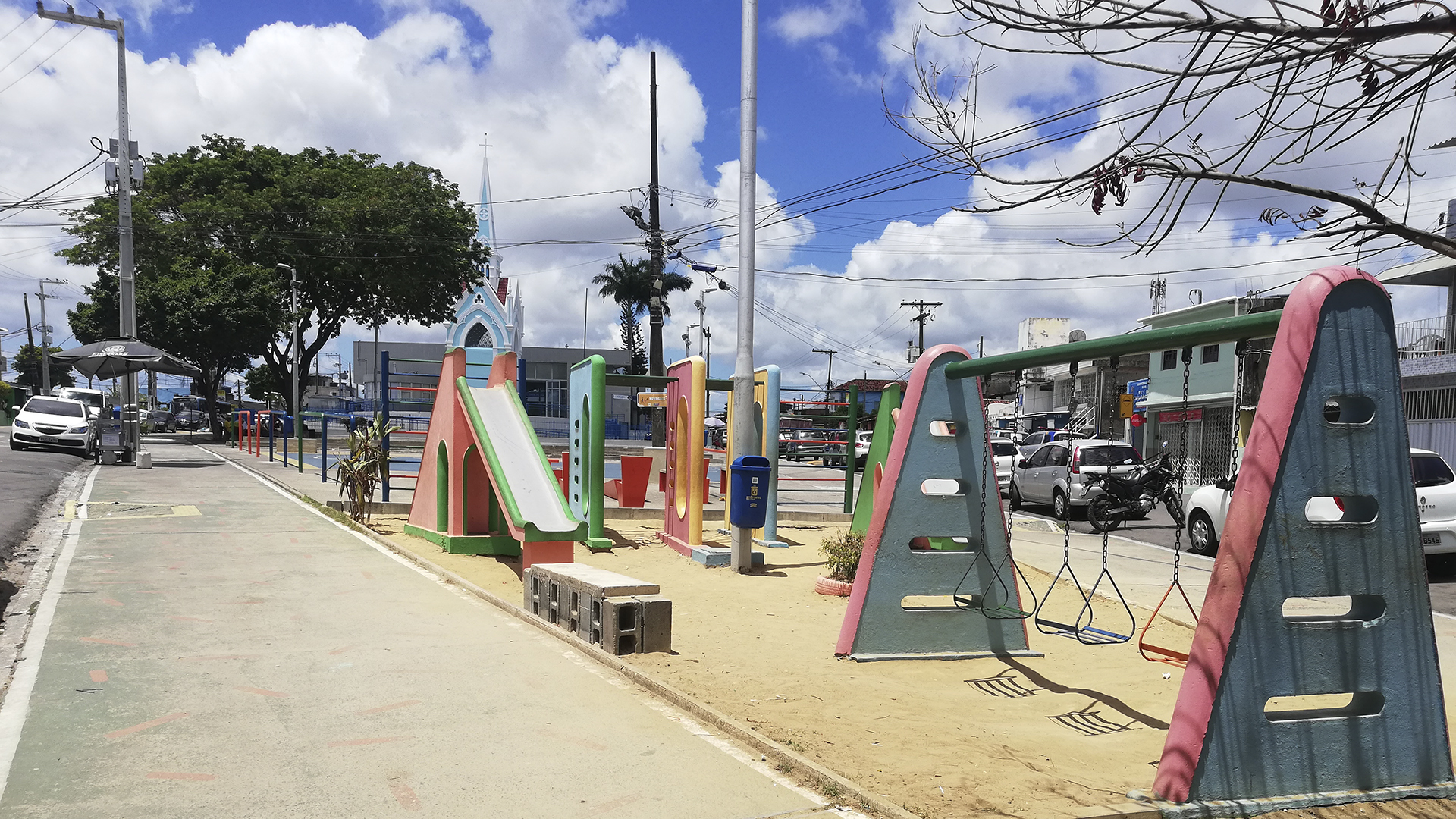
Permeable frontages include
- Public entrances to establishments, public parks and plazas along the walkway
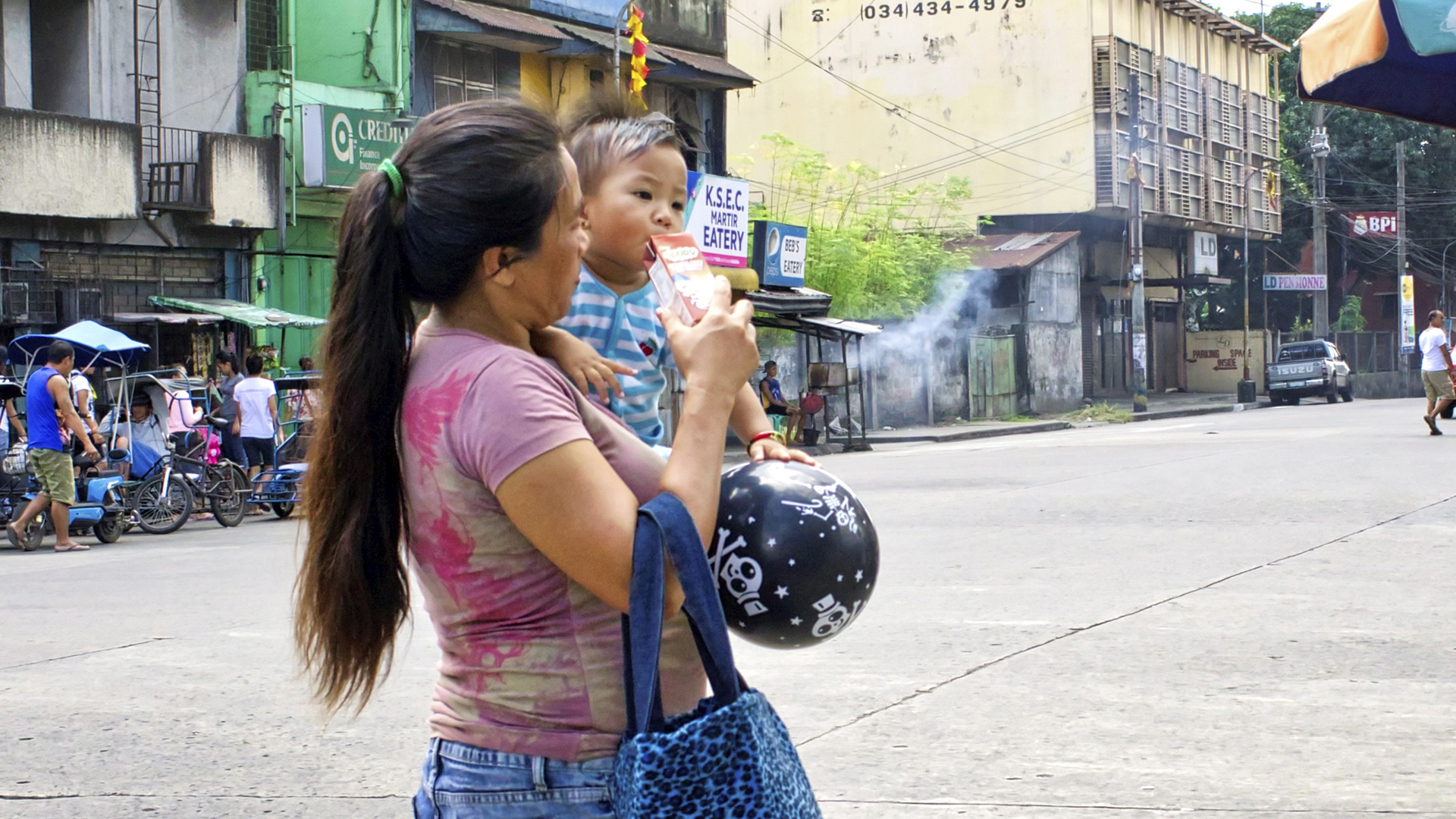
Objective C:
The pedestrian realm is temperate and comfortable
The comfort of walking is as important to pedestrians as the basic infrastructure enabling it. Shade and shelter create comfortable walking conditions important to anyone in the pedestrian realm, but especially caregivers with young children sensitive to harsh weather elements.
What it means for babies, toddlers, and caregivers:
The use of shade and shelter in public spaces makes walking, playing, and resting more comfortable. This is essential to the caregiver’s and baby’s comfort as it reduces the stress and fatigue of journeys and exposure to the elements. Transit stops, parks, and walkways should feature shade and can also incorporate seating and play areas for a more comfortable journey. Benches, foliage, public toilets, drinking fountains, trash bins, lighting, and wayfinding signage are also important considerations for pedestrians' comfort.
Metrics:
Shade and Shelter are created by
- Trees, arcades, awnings, and shelters at transport stops that protect people from exposure to weather elements
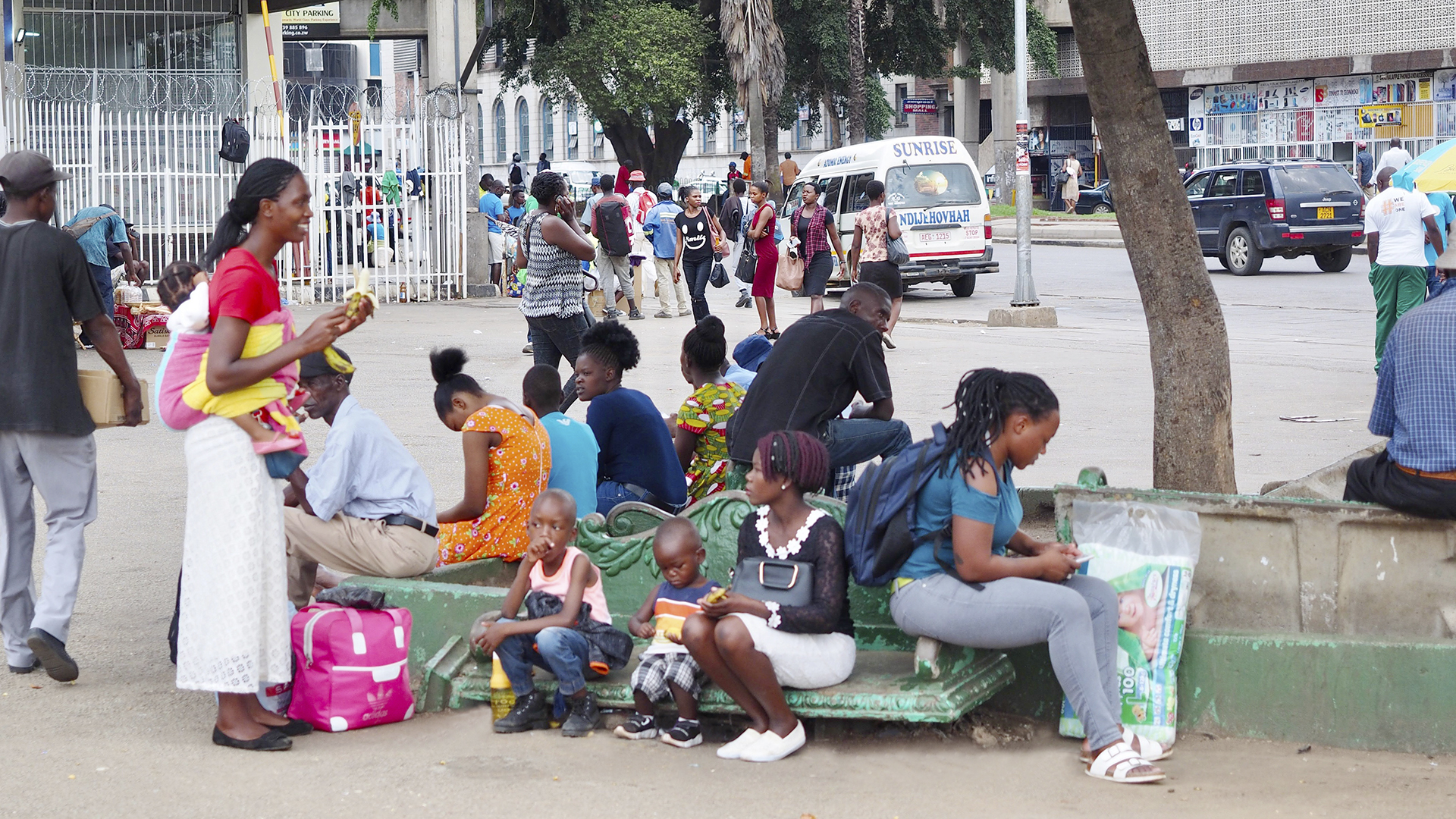

Principle 2: Cycle
Efficient and quick cycling travel for families is protected, safe and convenient.

If street conditions are safe, cycling provides another easy, affordable, and sustainable option for efficient travel within the neighborhood and beyond. It combines walking’s door-to-door travel convenience and schedules flexibility with ranges and speeds similar to local public transport services. It also offers many health benefits from increased physical activity. Cycling is highly efficient and consumes little space and few resources.
Cycling can give the caregiver greater flexibility and access to more services that may be beyond a reasonable walking distance. It can also allow the caregiver to travel more easily with other goods than walking or transit when cycling with bikes equipped with cargo features in safe cycling conditions.
Objective A:
The cycling network is safe and complete
An adequately developed cycle network is essential to promoting cycling to people, including caregivers who can cycle locally with their babies and toddlers or to transit for longer distance trips.
What it means for babies, toddlers, and caregivers:
Cycling with a baby or toddler can be a time for interaction and engagement with caregivers, such as talking with the child and pointing out sights in their immediate environment. Caregivers with toddlers need a well-developed and protected cycling infrastructure as they have a lower risk tolerance to road conditions and unsafe traffic. Cycle routes, just like pedestrian routes, should form a continuous and wide network that links key destinations that caregivers need to reach, such as daycares, parks, and transit services.
Metrics:
A safe Cycle Network can include
- Protected bike lanes on streets exceeding traffic speeds 30 km/h (20 mph)
- Slow streets (speeds below 30km/h)
- Shared streets (< 15km/h speed limit)
- Pedestrian and cycle-only paths
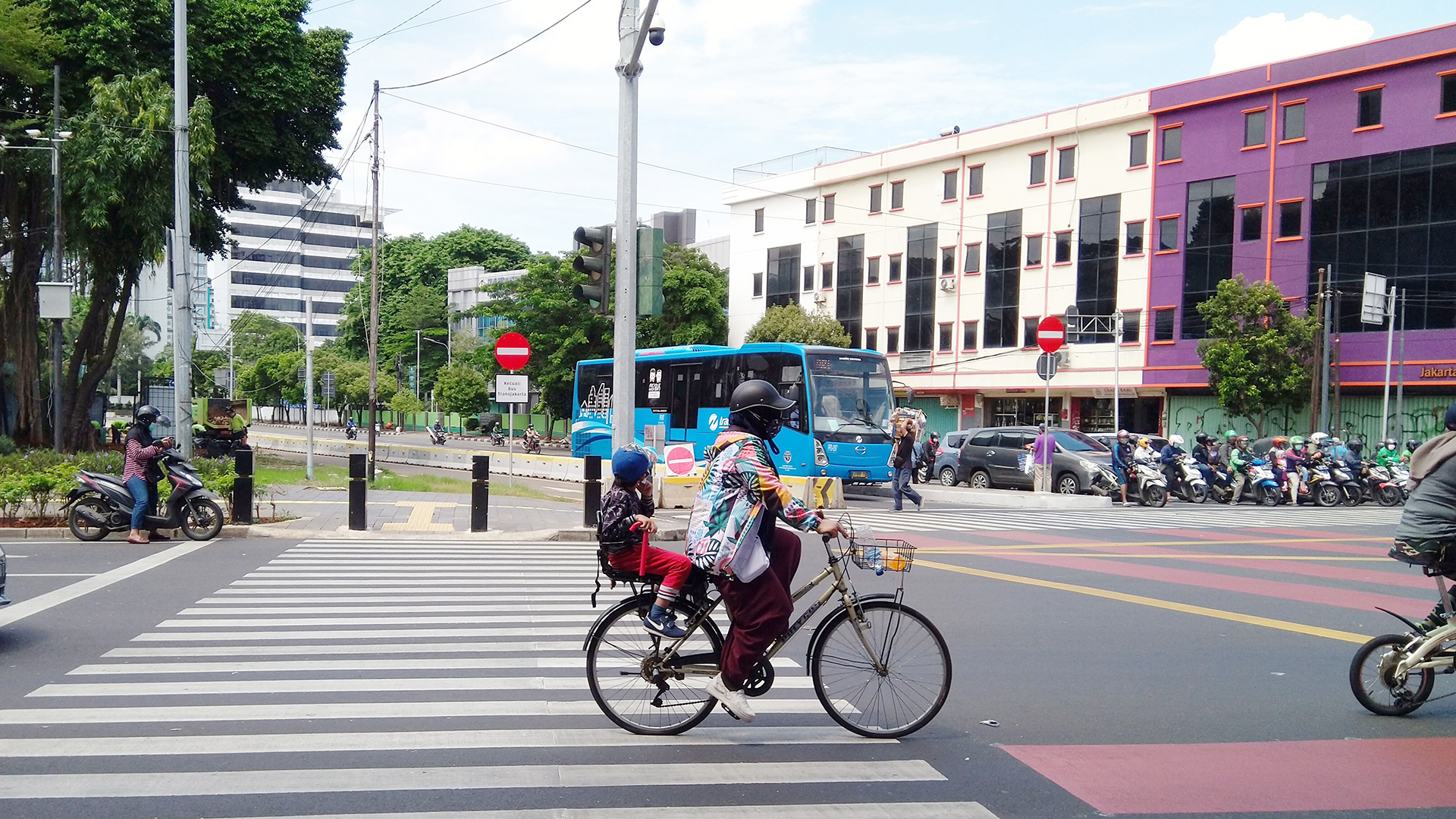
Objective B:
Cycle parking and storage are ample and secure
Adequate cycle parking included in the cycling infrastructure makes cycling convenient for everyone.
What it means for babies, toddlers, and caregivers:
The ability to safely and conveniently store bicycles in one's own home, workplace, as well as at transit stations and neighborhood facilities can encourage cycling among caregivers on a frequent basis especially when they trip chain their journeys. Parking for larger cargo bikes and tricycles can help caregivers traveling with children and goods.
Metrics:
Cycle Parking at Transit Stations should include
- Facilities for locking bicycles and other nonmotorized modes, such as outdoor racks or weather-protected storage within 100 m of a transit station entrance
- Bike parking does not block pedestrian path
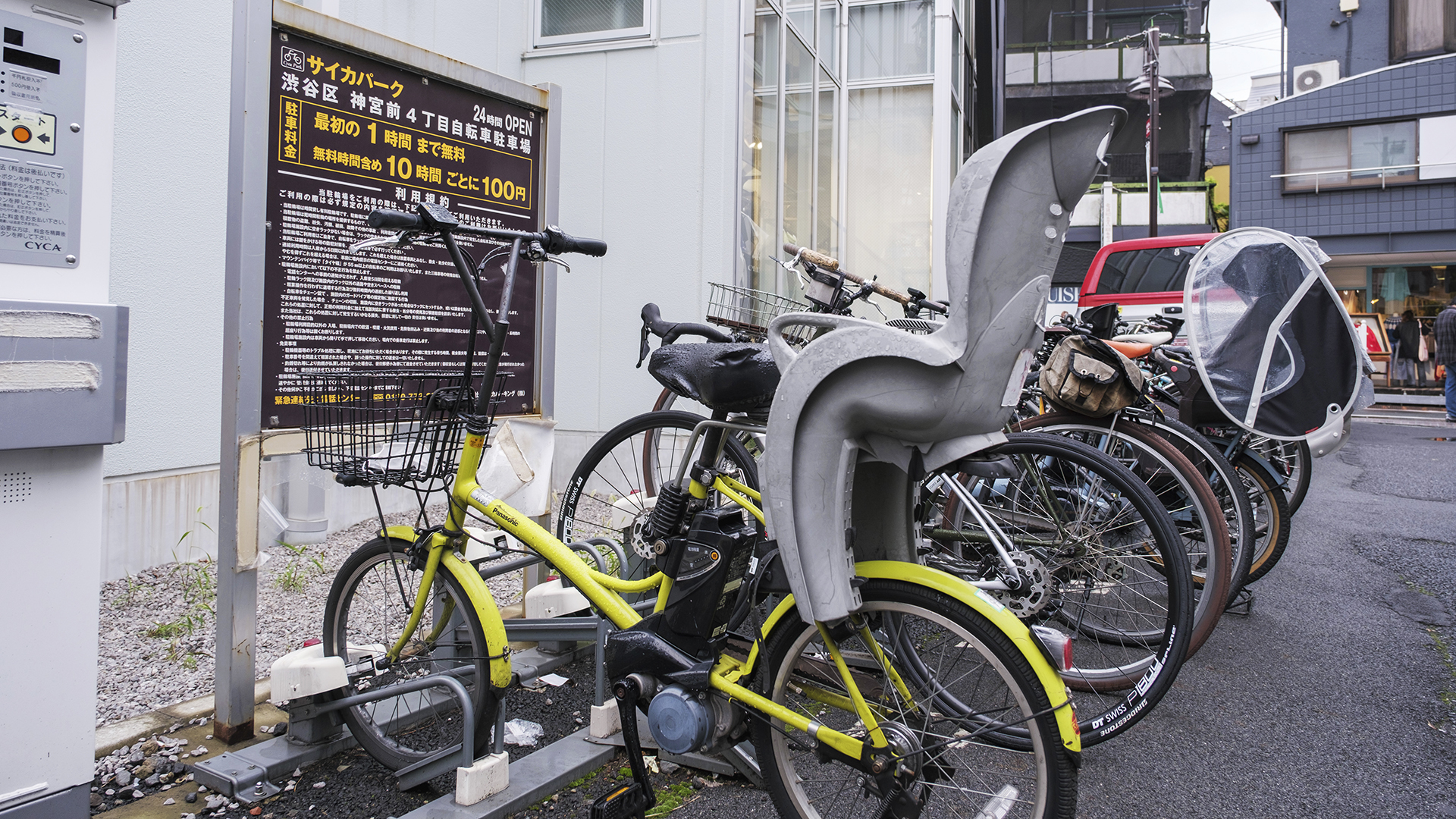
Cycle Parking at Buildings can include
- Ample racks or other fixed facilities within 100 m of larger buildings and facilities
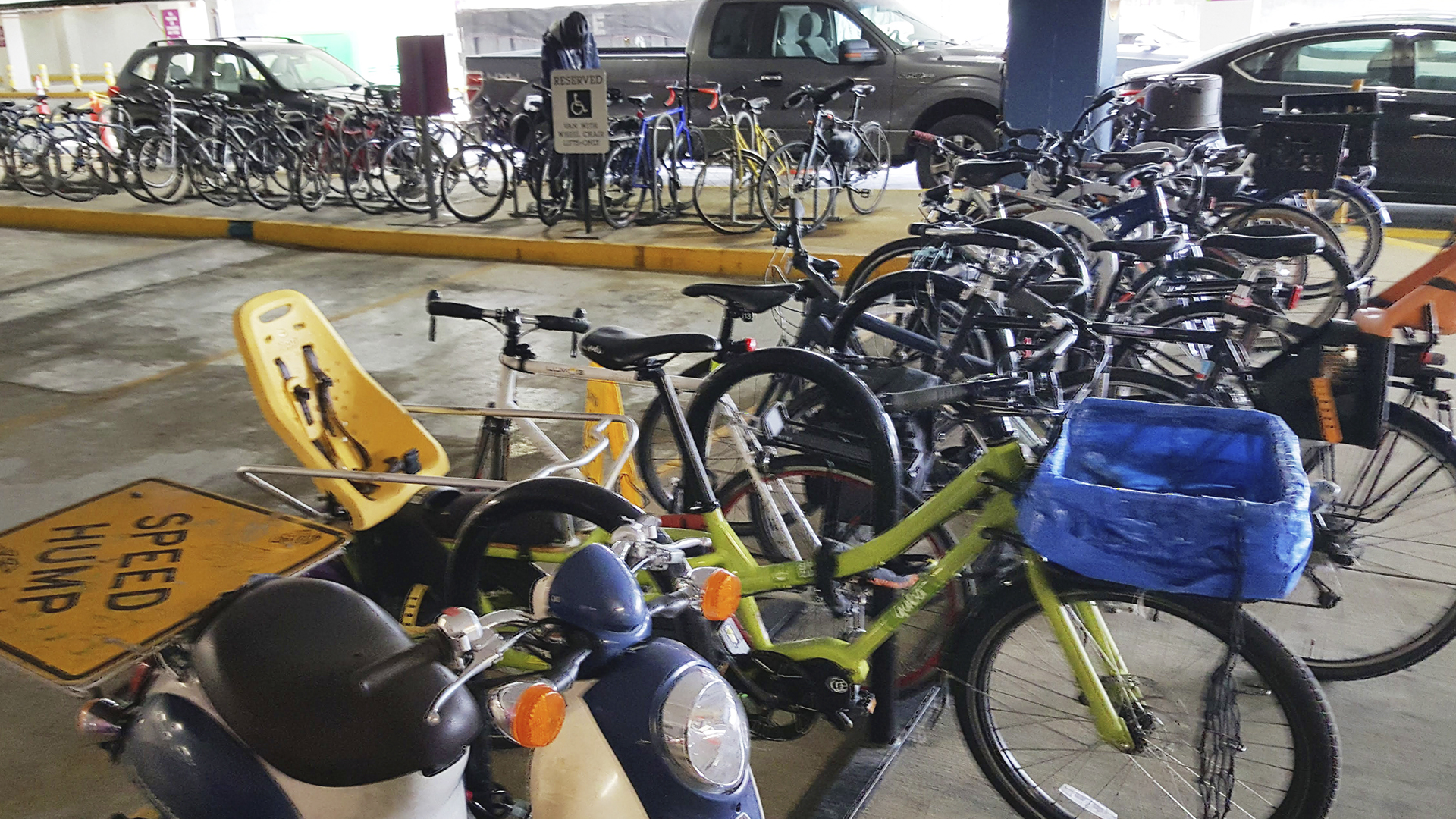
Cycle Access in Buildings means
- Buildings allow interior access and storage for cycles within residential and nonresidential tenant-controlled spaces
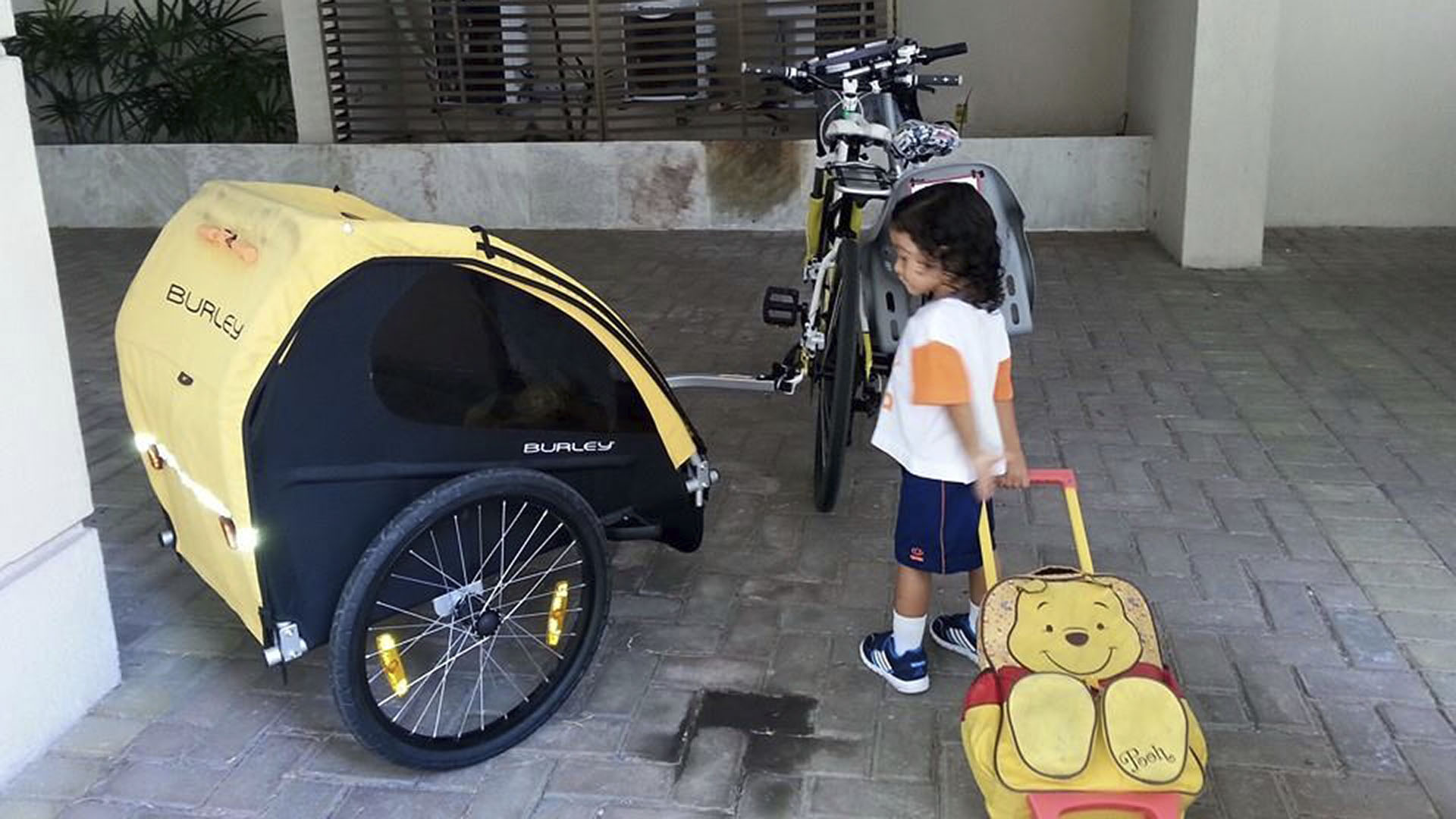

Principle 3: Connect
Walking and cycling routes are short, direct, and connected with priority for children and caregivers.

Walking is more convenient at shorter distances, regardless of age or physical ability, and especially when caring for young children. Laying out neighborhoods based on the fine grain of pedestrian and cycling paths and networks in all directions prioritizes people walking and cycling. This also gives caregivers the option to take the most convenient and direct routes or detours.
Objective A:
Walking and cycling routes are short, direct, and varied
The simplest proxy for connectivity is the size of city blocks. Smaller blocks slow down traffic, provide a direct network, and offer more choices of walking paths to suit individual needs. Long blocks form obstacles and detours that can discourage, or make unpleasant, pedestrian movement, especially for caregivers with children.
What it means for babies, toddlers, and caregivers:
As traveling with young children often means traveling more slowly, having shorter, more direct connections help reduce stress for caregivers during the trip and facilitates quicker travel. Caregivers tend to prefer flexible, shorter trips closer to home, as they navigate both the neighborhood and the needs of babies and toddlers, such as frequent feeding and sleeping schedules and the unpredictable nature and behaviors of young ones. Since caregivers are more likely to ‘trip-chain’, or to complete trips with multiple stops throughout the day, having a dense, connected network that links various destinations helps caregivers be more time-efficient.
Metrics:
Small Blocks should
- Not exceed 110 m in length on each block side
- Be publicly accessible for pedestrians for at least 15 hours a day
- Can include publicly accessible passageways through blocks
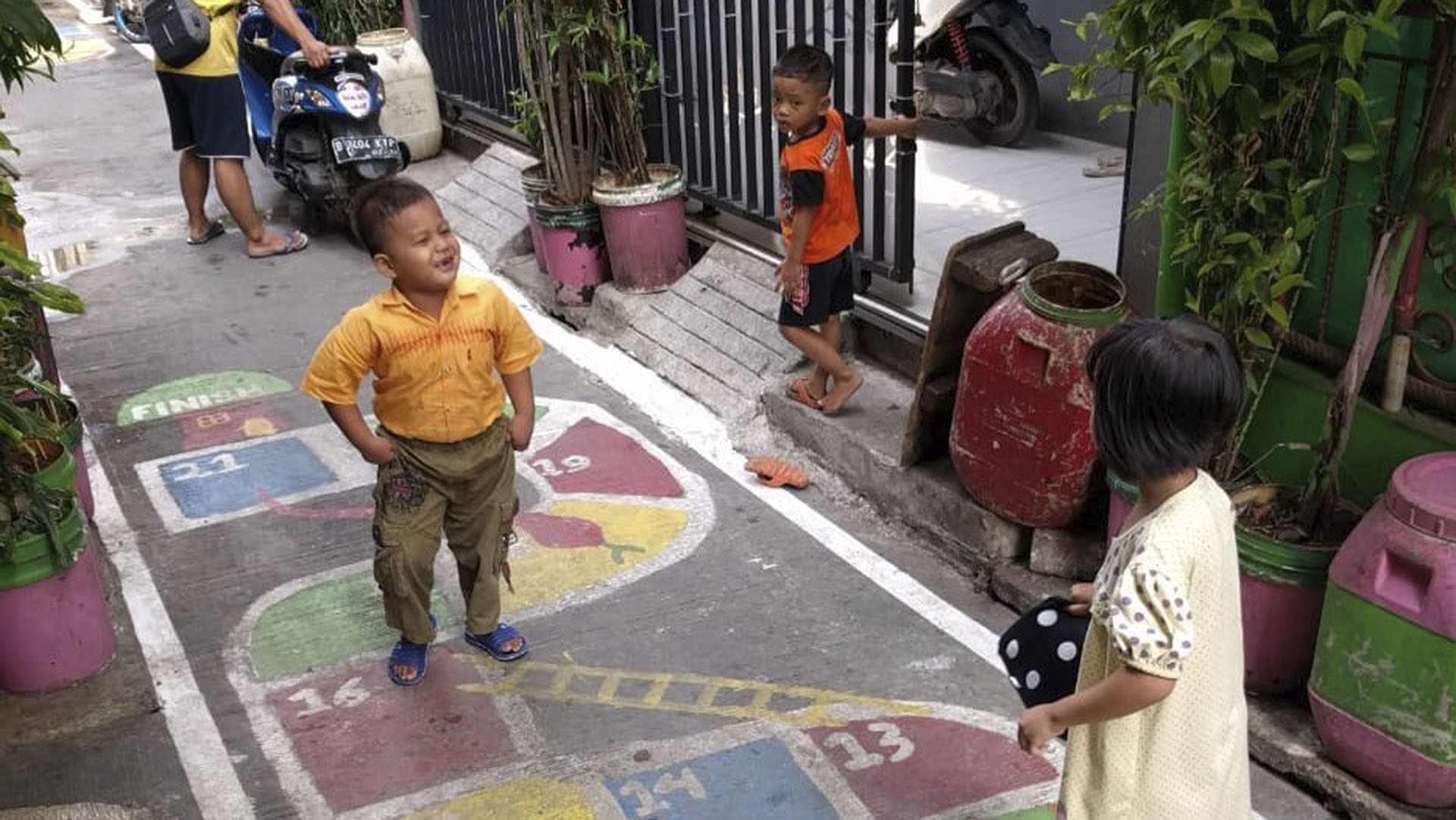
Objective B:
Walking and cycling routes are shorter than motor vehicle routes
When the pedestrian and cycle network prioritizes pedestrians and cyclists, not cars, the routes can be flexible and much shorter for them. This means that the network of pedestrian and cycle paths, shared streets, and crosswalks are denser than the network of streets and intersections for motor vehicles.
What it means for babies, toddlers, and caregivers:
Slower streets dedicated to pedestrians and frequent crosswalks improve safety for caregivers walking or strolling with their young children. By having more nonmotorized intersections than motor vehicle ones, a neighborhood gives caregivers, babies, and toddlers more safe options for walking and cycling to local destinations in the neighborhood.
Metrics:
Prioritized Connectivity is enabled by
- Pedestrian and cycle crosswalks at all intersections
- Prioritized connectivity occurs at intersections of pedestrian-priority (shared) streets and pedestrian-cycle streets and paths
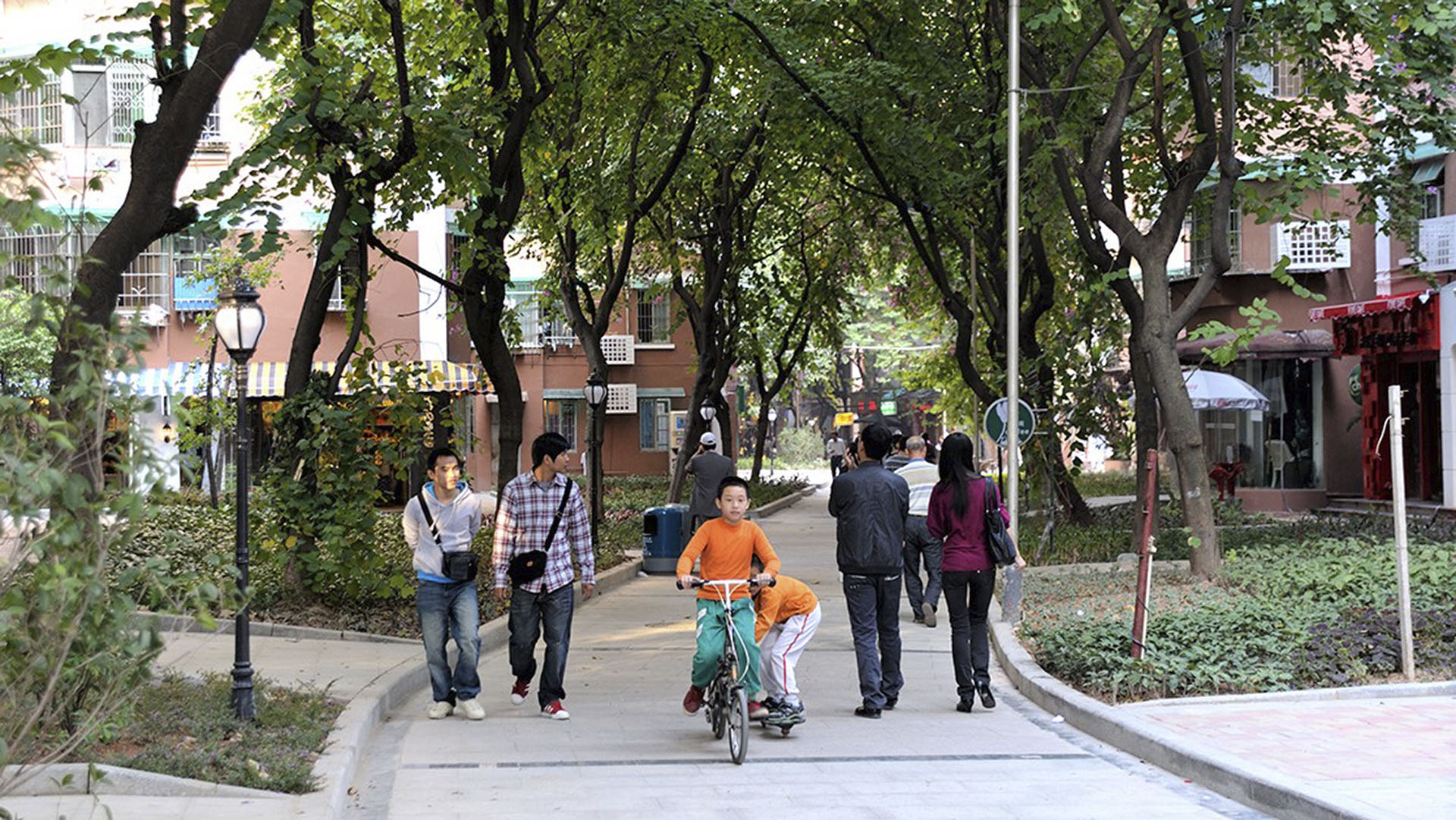

Principle 4: Transit
Quality and affordable public transport meeting caregivers’ travel needs are easily accessed.

Public transport is the most efficient, sustainable, and often the most affordable mode for medium to long-distance trips. Frequent, safe, reliable public transport that is affordable and accessible within a short walking distance is essential for daily commutes to work and to essential and specialized destinations across the whole city (e.g., retail, healthcare facilities, and child-oriented services). Caregivers responsible for the well-being of their babies and toddlers and the rest of their families rely on the nearby transit. When transit is within walking distance, this reduces strain for caregivers and stress for young children while moving around the city.
Objective A:
High-quality transit is accessible by foot
When public transit including frequent and rapid transit service is within a walking distance from where people live, it promotes social inclusion and well-being and increases equity by linking people to opportunities, services, and leisure.
What it means for babies, toddlers, and caregivers:
Public transport should be affordable, frequent, safe, and convenient with the integration of fares and modes. Because caregivers need to carry, push, or watch small children, short trips can turn into long journeys. Frequency of service matters, because less time waiting at the station means less time managing a baby or toddler in that environment and less opportunity for urban violence. More frequency can hopefully translate into less crowding, a deterrent for caregivers traveling with babies and toddlers.Transit should also be inviting and comfortable with many access points, level boarding, clear wayfinding, and convenient seating at stations and inside the vehicles.
Metrics:
Walking Distance to Transit is satisfied when
- Rapid transit station is accessible within 1,000 m walking distance
- Frequent transit stop is accessible within 500 m walking distance and connects to rapid transit service within 5 km
- Service design provides access to strollers and people with disabilities
- Service frequency is at least every 15 minutes from 7 a.m. - 10 p.m
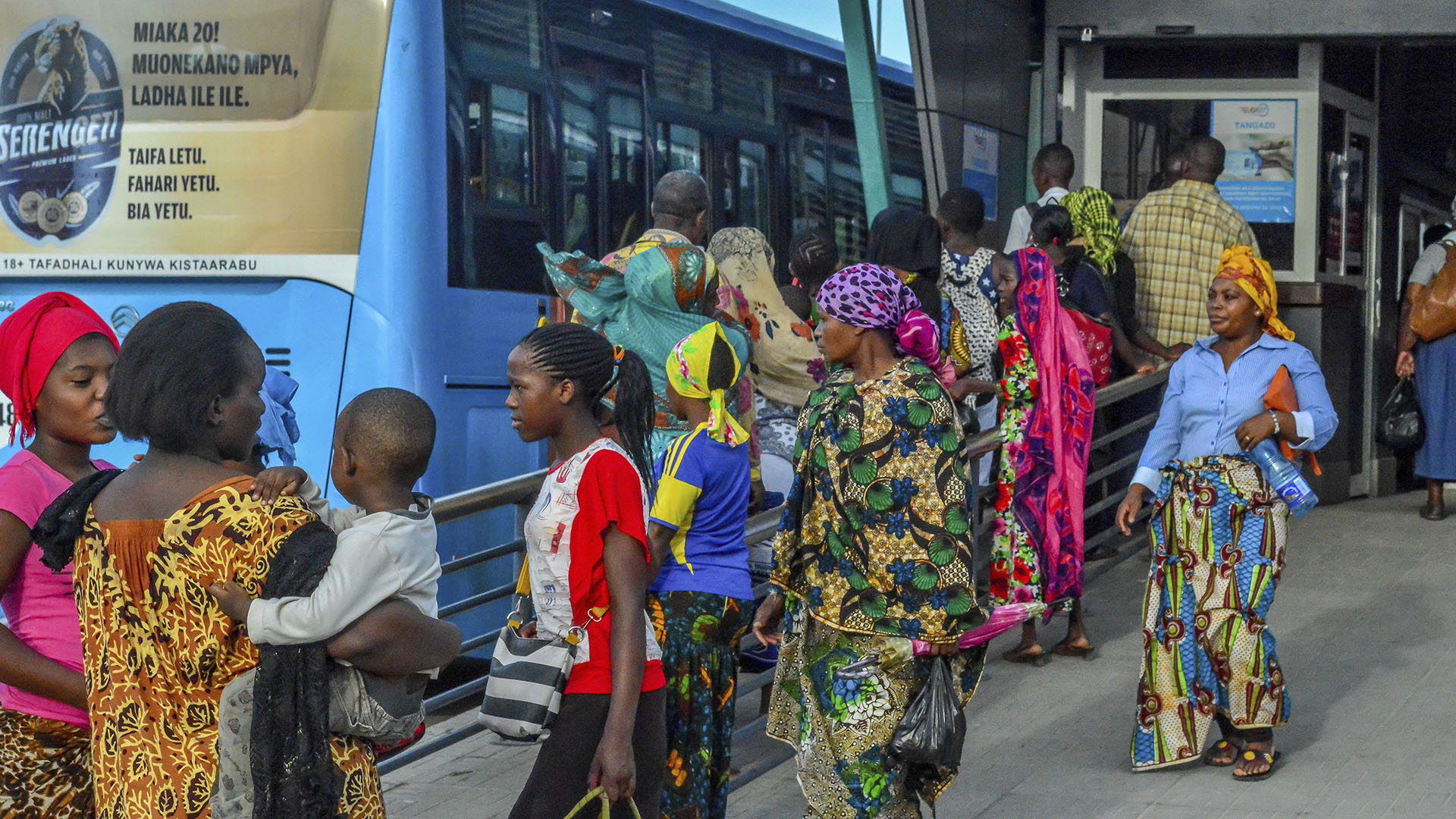

Principle 5: Mix
Essential services and housing opportunities are available locally to families of all sizes and incomes.

A mix of activities and a mix of people creates healthier, more robust, and more inclusive communities for people of all backgrounds and allows many daily trips to remain short and walkable. Diverse uses keep local streets animated and safe over the course of the day. A mix of housing options makes it more feasible for workers and families of all income levels to live near jobs and transit.
Objective A:
Opportunities and services are within a short walking distance of where people live and work, and the public space is activated over extended hours
Mix of uses ensures a balance of activities that enliven the public realm all through the day and night and allow for daily destinations for human care and well-being to be close.
What it means for babies, toddlers, and caregivers:
When the neighborhood has diverse land uses, caregivers are more likely to find the goods and services for their babies and toddlers locally without the need to travel far. Diverse uses also enliven neighborhoods and provide opportunities for socialization and local employment for caregivers. Essential services like daycares, sources of fresh food, and healthcare services needed on a frequent basis should be conveniently located as close to home as possible and along key routes. Young children and babies need areas for safe play and stimulation for healthy development. Even small play areas, nooks with seating, and pocket parks can enhance daily journeys with young children.
Metrics:
Complementary Uses encourage neighborhood mix when
- 40% to 60% of the total floor area in the neighborhood consists of residential uses
- Buildings include residential and nonresidential uses
- Neighborhoods have balanced residential and nonresidential uses (complete, mixed-use neighborhoods)
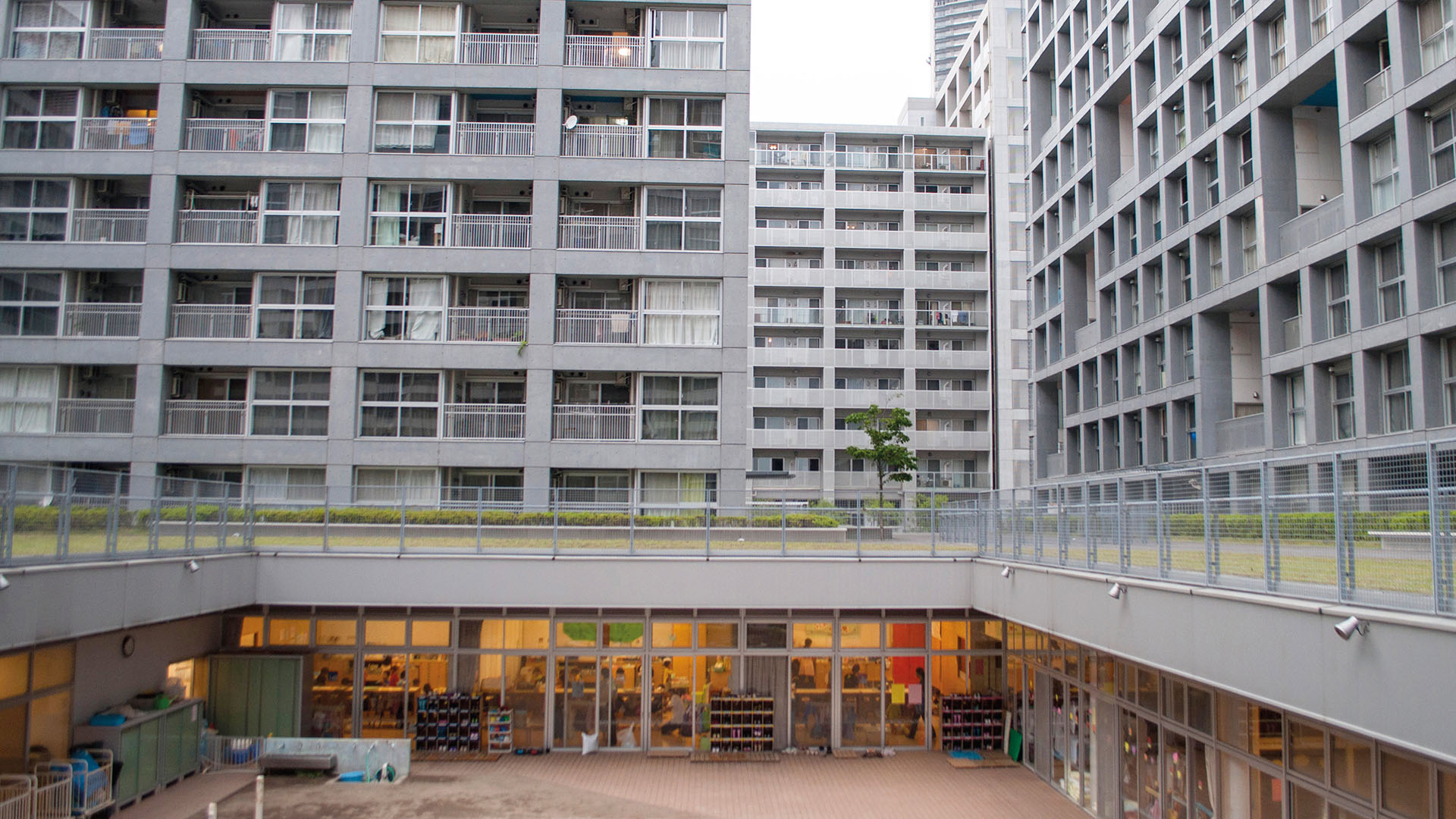
Access to Local Services is enabled when
- Fresh food sources are accessible within 500m walking distance
- Daycares, elementary or primary schools are accessible within 1,000m walking distance
- Healthcare facilities or pharmacies are accessible within 1,000m walking distance
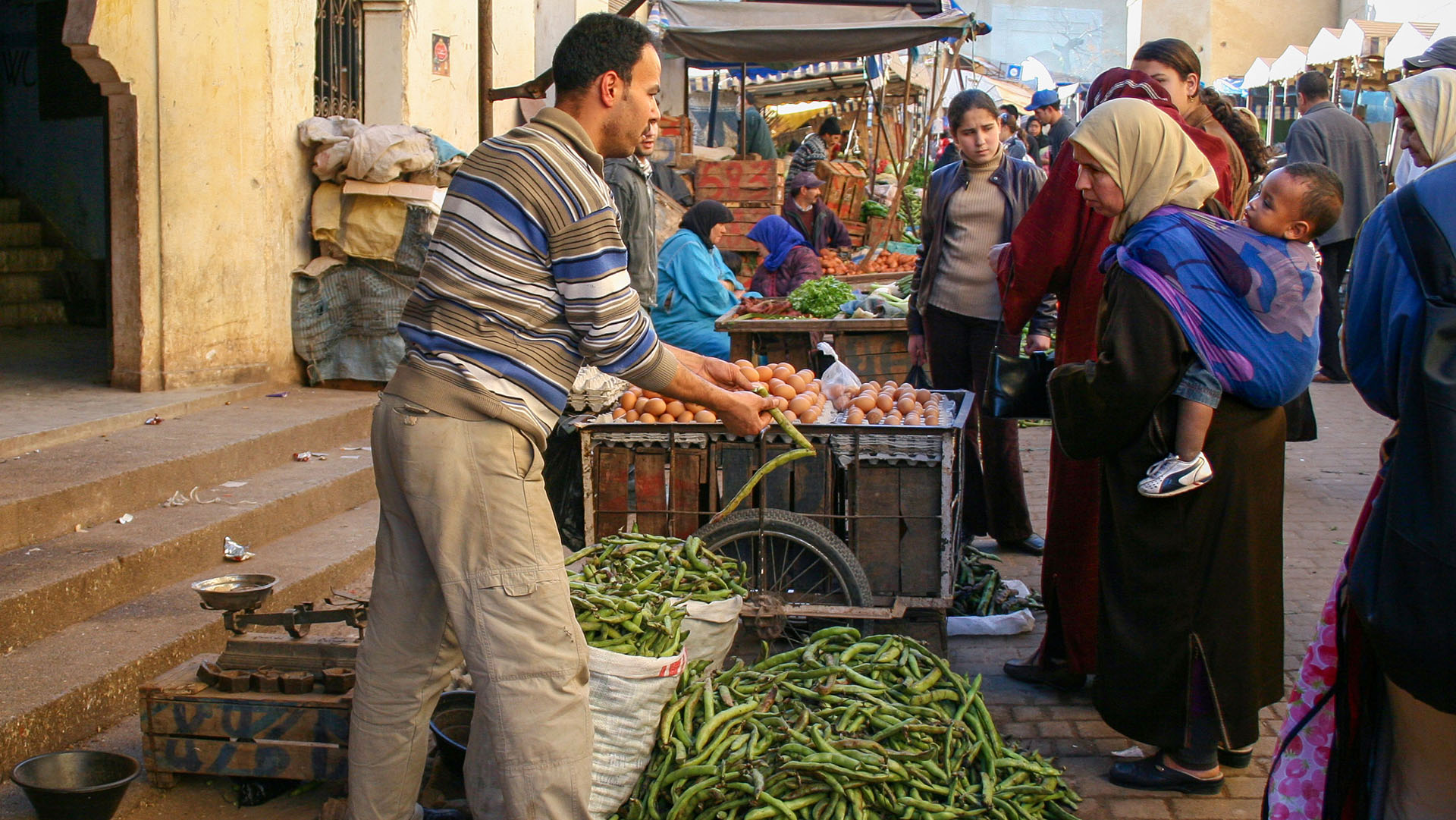
Access to Parks and Playgrounds is enabled when
- Parks, playgrounds and other open spaces of at least 300m² are accessible within 500m walking distance
- There is a public access at least 15 hours a day
- Public facilities provide shared-use open space such as school yards
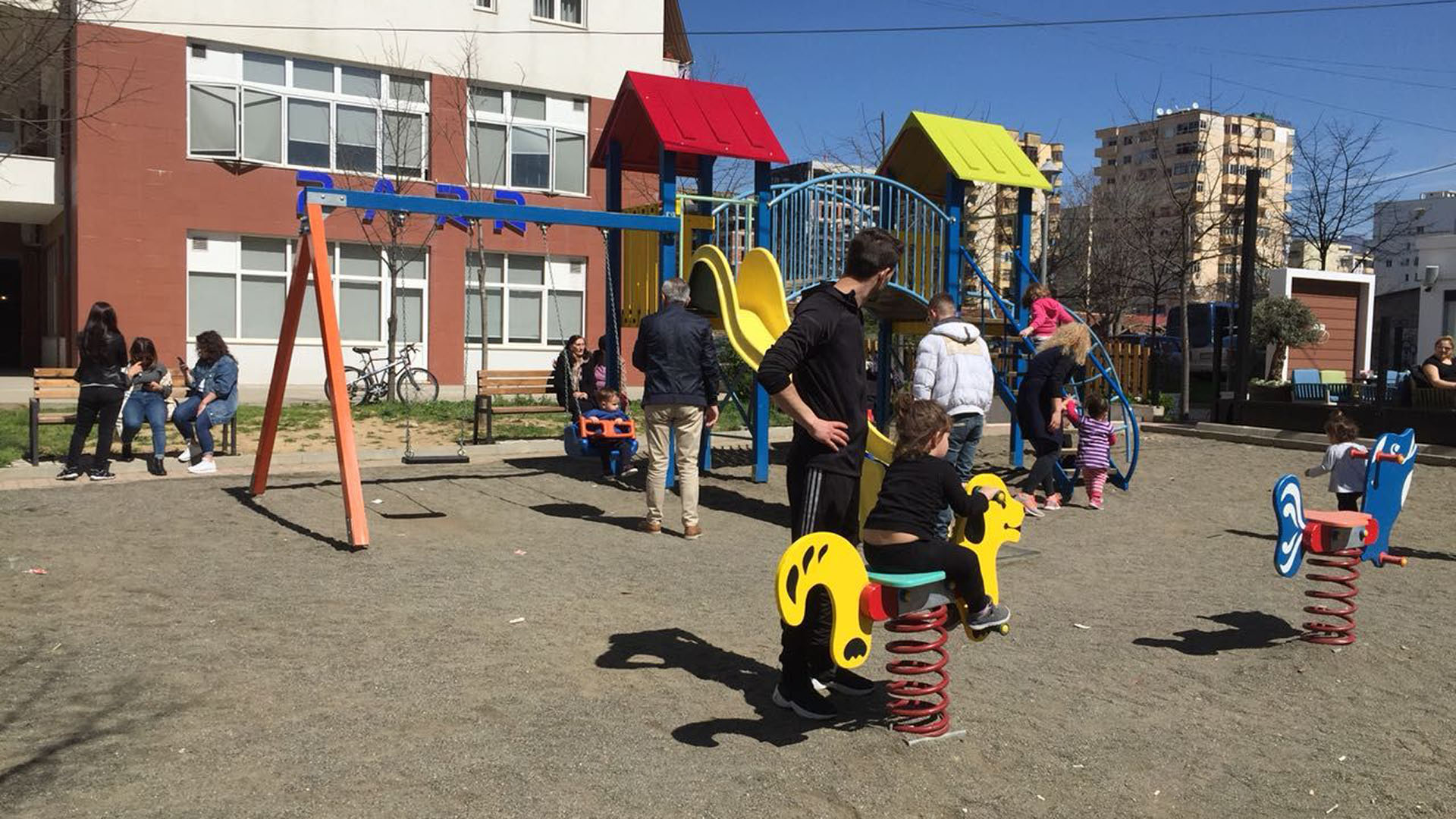
Objective B:
Diverse demographics and income ranges are included among local residents
Social inclusion creates stronger support systems for neighborhood residents. This means that people and families of all incomes and demographics have opportunities to live within the same area and enjoy the neighborhood facilities and services.
What it means for babies, toddlers, and caregivers:
All families should have access to housing that is affordable and near employment and social opportunities. For families with young children, in particular, affordable housing close to educational, social, and developmental opportunities is essential. For lower-income families, local social safety nets sustain caretaking activities, and thus, the preservation of local businesses and residences helps keep those social safety nets intact. When local businesses and services remain in the neighborhood, families of all income ranges benefit from them.
Metrics:
Affordable Housing helps create inclusive neighborhoods when
- Between 30% and 69% of housing units in the area priced 30% below the metropolitan median price
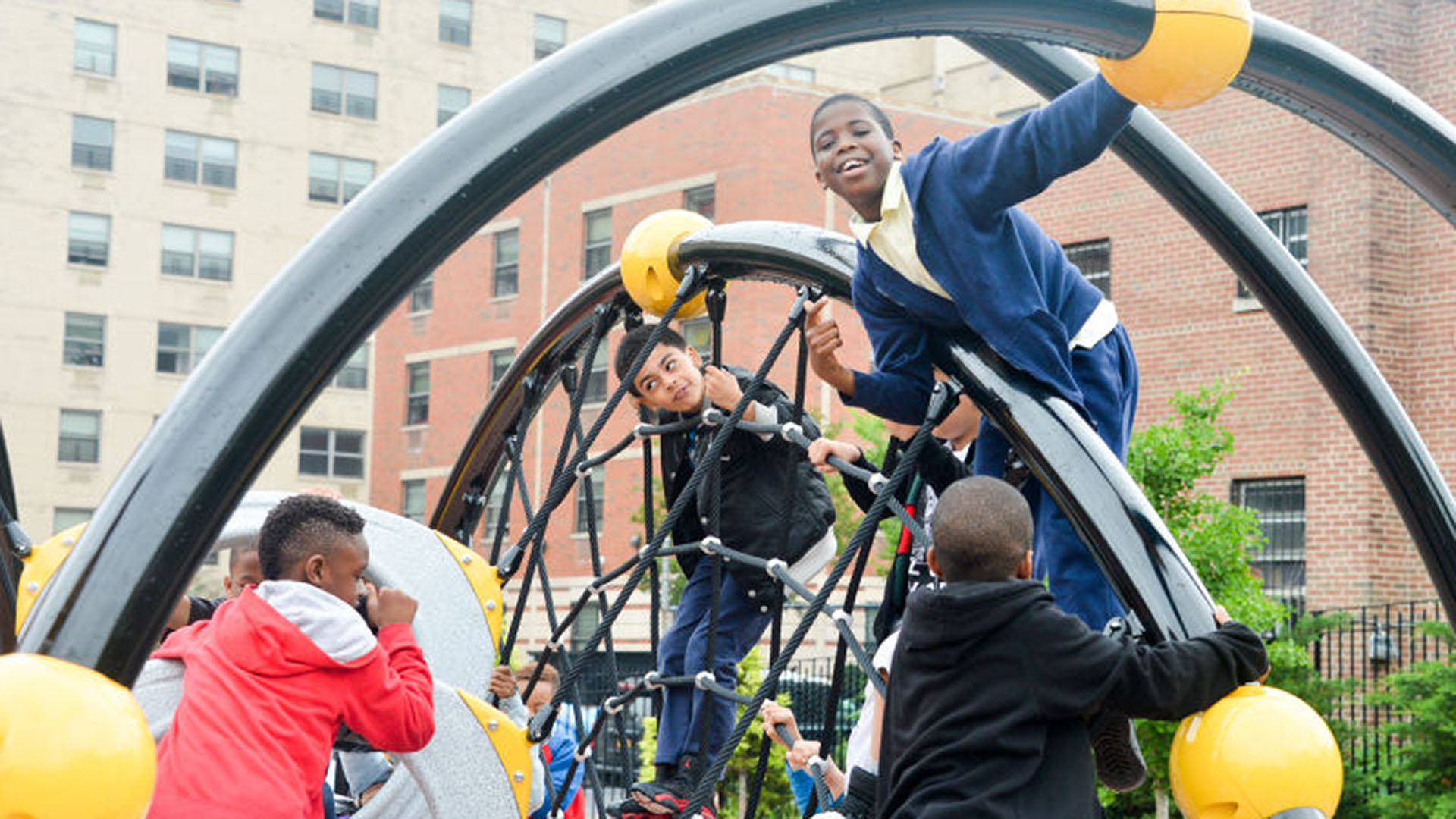
Housing Preservation promotes neighborhood inclusion when
- Households are maintained in the initial housing units, brought up to local building standards
- Households are rehoused on site or within 500 m walking distance of the former unit
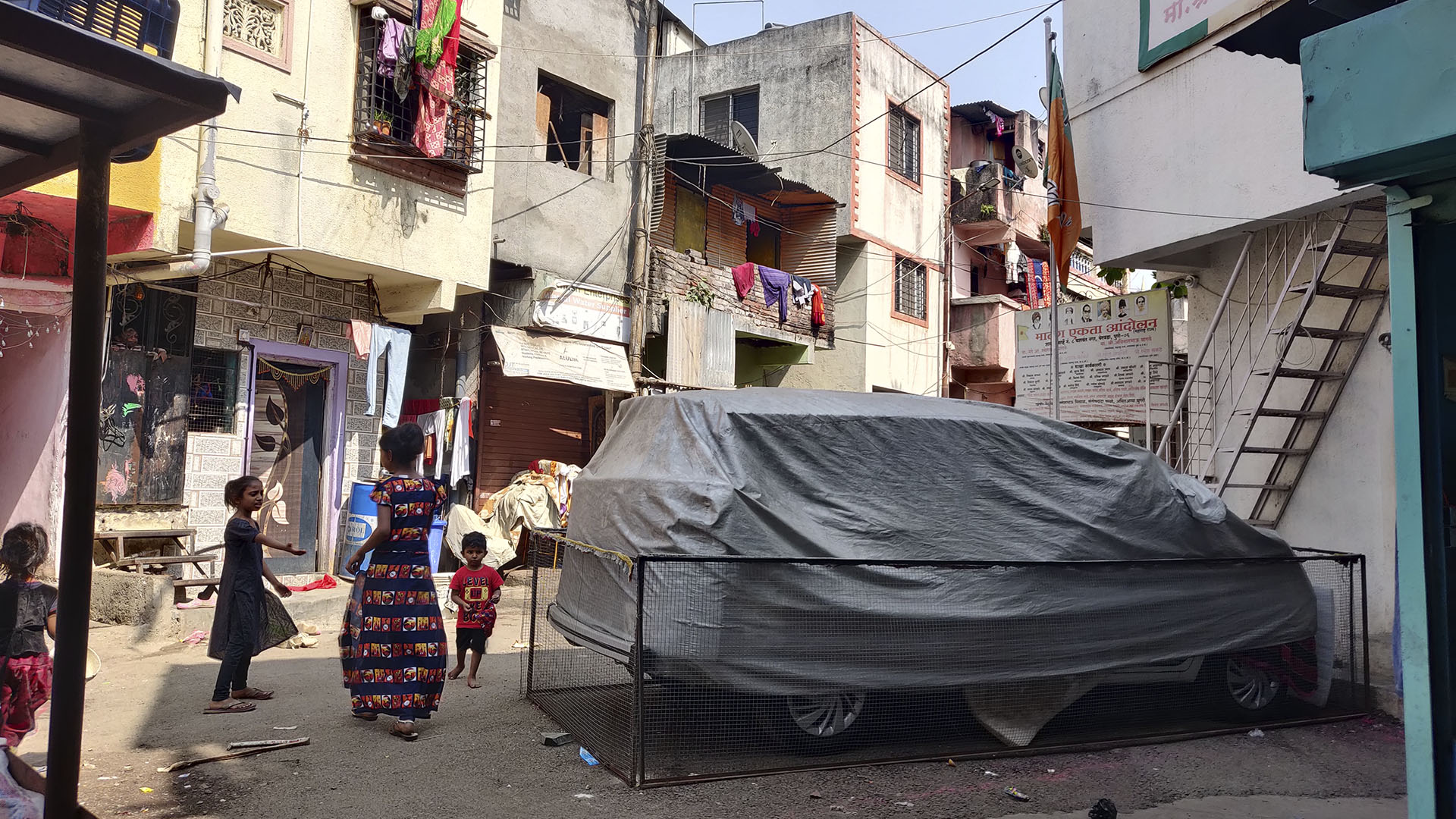
Business and Services Preservation promotes neighborhood inclusion when
- Space offered for relocation or upgrade for businesses is similar or of a better standard or better standard and at the same or lower cost
- Interim relocation is within 500m during construction or compensation is given for loss of business
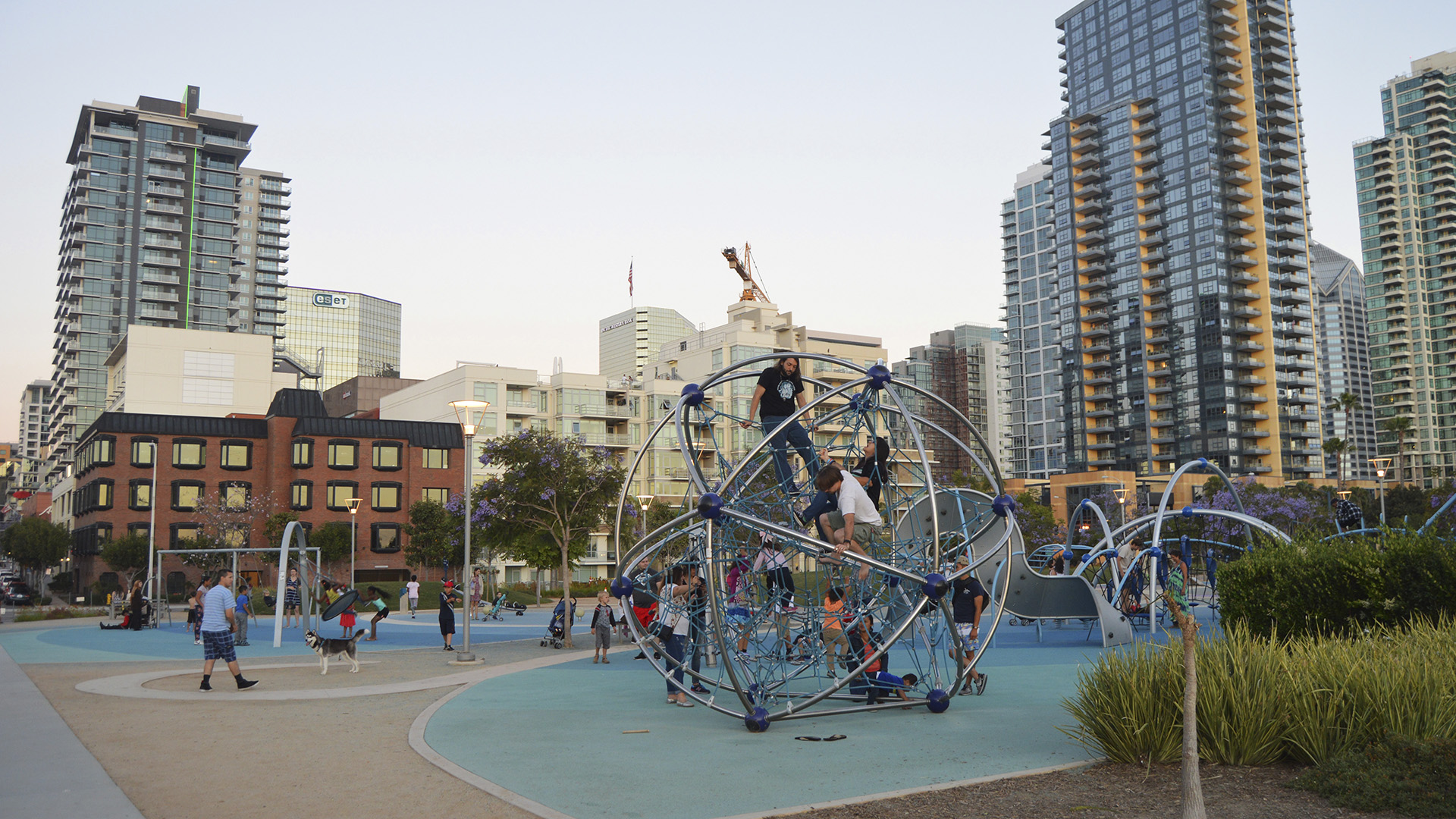

Principle 6: Densify
Enough people live nearby to sustain local services and local employment options that caregivers may need.

Complete neighborhoods where all needed destinations are walkable within 15 minutes require sufficient densities of residents, workers, and visitors to make public and commercial services viable (e.g., public transport, health and education, local retail, and child-oriented services). The density of people and activities is also critical to public space activation and security. Density does not mean overcrowding. It means sufficient space for activities, for living, for sunlight, for air circulation, all the while supported by public utilities with sufficient capacities, such as sewage, water, electricity, and transit.
When there is a good balance of residential and nonresidential densities, this enables an adequate supply of economic and social opportunities, as well as goods and services for all residents, including caregivers, toddlers, and babies.
Objective A:
High residential and job densities support high-quality transit, local services, and public space activity
Concentrations of people, activities, and services are good for inclusive access for all residents in the neighborhood. Both nonresidential and residential densities are needed to achieve this.
What it means for babies, toddlers, and caregivers:
A good balance of residential and nonresidential densities enables an adequate supply of economic and social opportunities, as well as goods and services for caregivers, toddlers, and babies. Because of the challenges of childcare, many caregivers need employment options and essential services nearby in order to facilitate picking up and dropping children to daycare and schools, for after-school activities and being able to respond to emergencies, such as if the child is sick.
Metrics:
Nonresidential Density is supported by
- Higher concentration of nonresidential uses in closer proximity to the main transit station (about a 10- to 15-minute walk)
- Balancing of nonresidential uses with residential uses
- Nonresidential uses should not be charming to health of residents and visitors
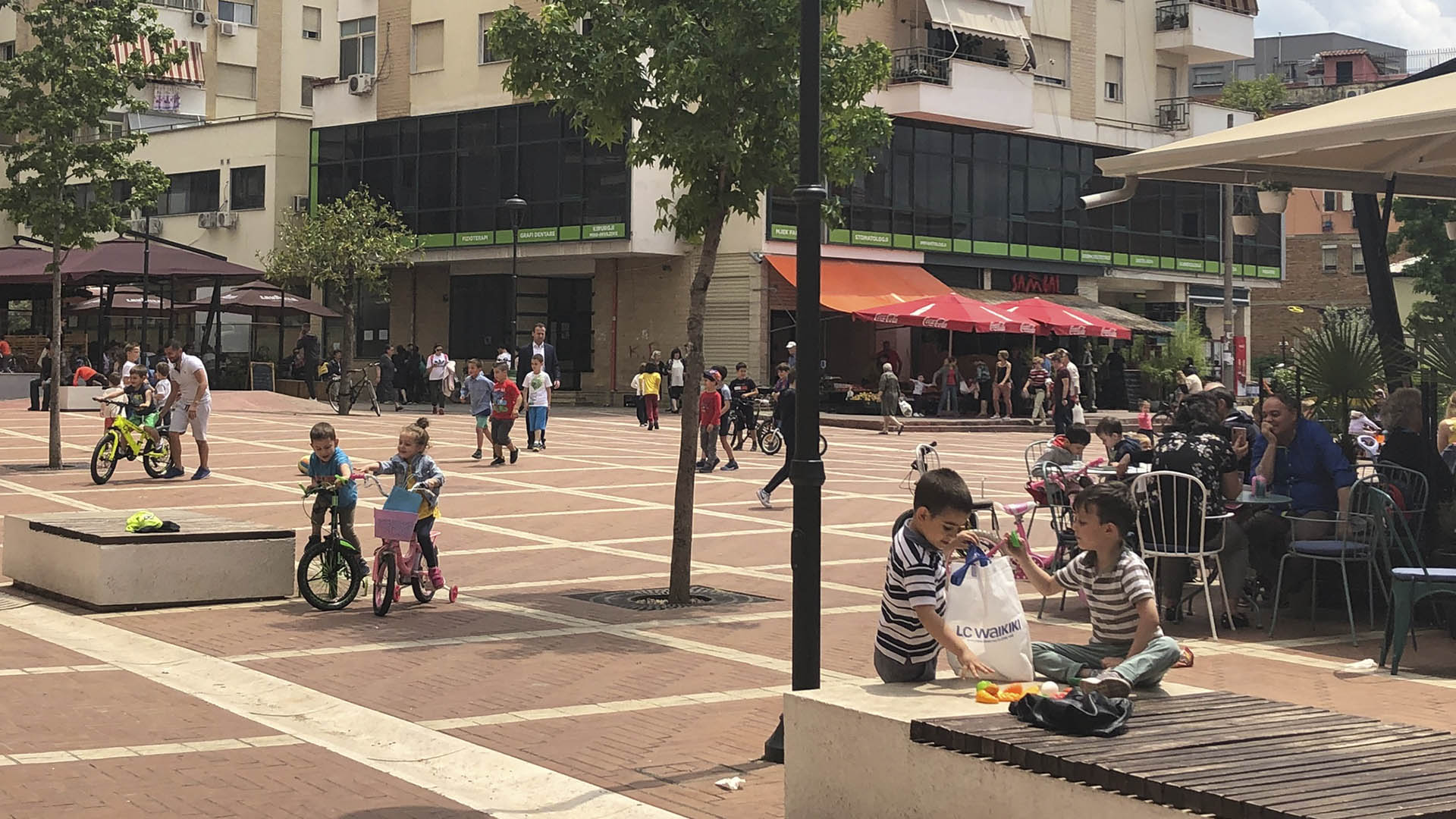
Residential Density is supported by
- A higher concentration or residential units in a closer proximity to the main transit station (about 10- to 15-minute walk)
- Balancing of residential uses with nonresidential uses
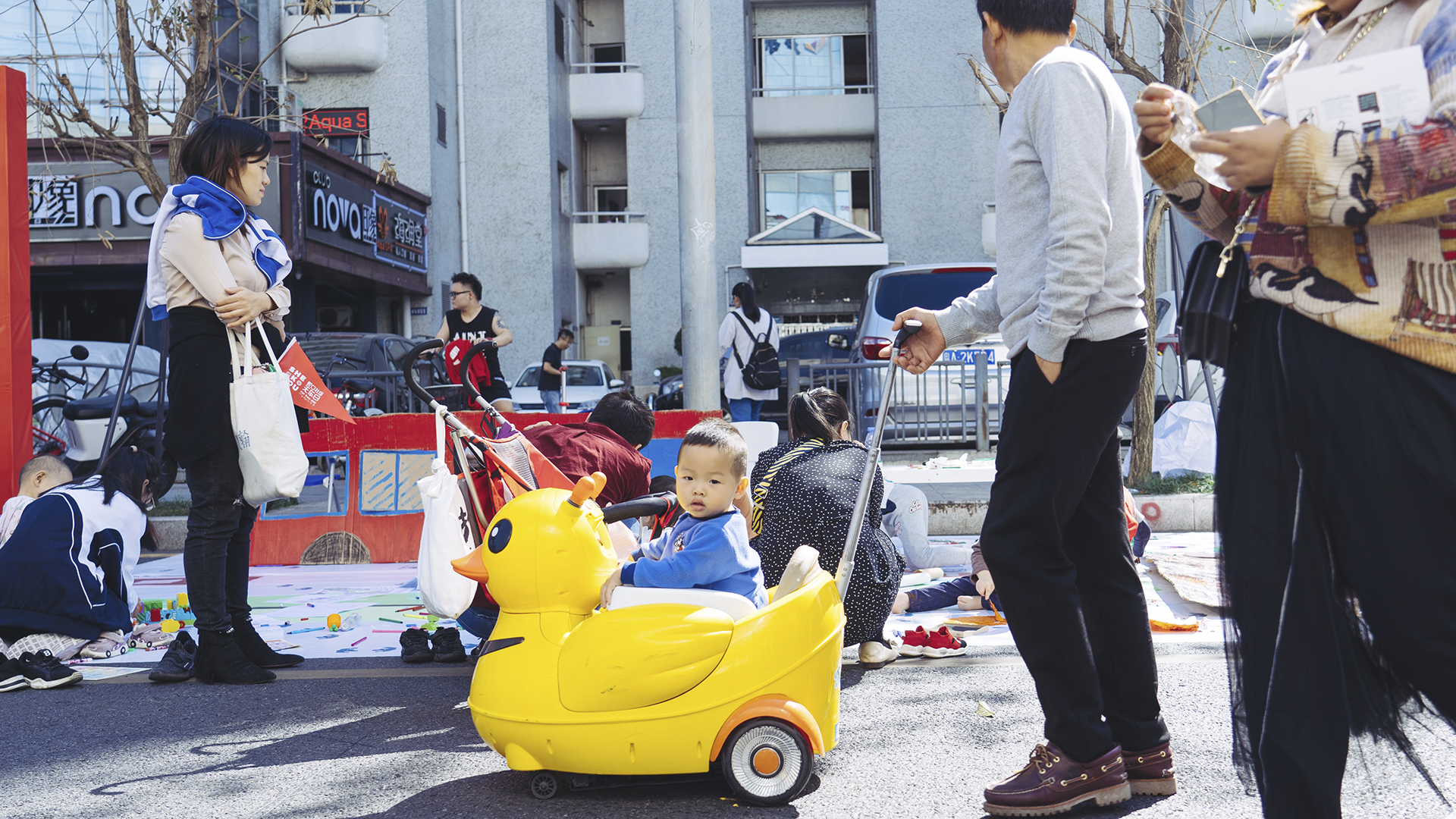

Principle 7: Compact
Travel outside the neighborhood takes less time and fewer resources to reach key destinations for time-constrained caregivers.

Compact cities use fewer resources, reduce travel times, and help preserve rural land from development. TOD allows for spatial integration both in terms of the location of development and the coverage and integration of public transport services. As cities grow and expand, public policies, private investment, and individual choices must ensure that development happens where, and only where, the urban system allows lifestyles centered around short walks and abundant public transit options.
Compact cities create more enjoyable and healthier environments for caregivers, babies, and toddlers. Compact urban forms facilitate convenient travel to destinations not only within the neighborhood but also throughout the whole city.
Objective A:
The development is in, or next to, an existing urban area
When cities prioritize growth in already urbanized areas, urban fabrics with density of people, infrastructure and services can facilitate short commutes via walking, cycling and public transport. Neighborhoods retrofitted or developed on this objective ensure that everyone can access opportunities, leisure and services locally.
What it means for babies, toddlers, and caregivers:
Compact cities enable healthier transport, shorter trips, better air quality, and more social, economic, and educational opportunities for caregivers, toddlers, and babies.
Metrics:
Urban Site is supported when
- Development is built on sites surrounded by other built-up areas such as on empty lots or development sites cleared up for new development
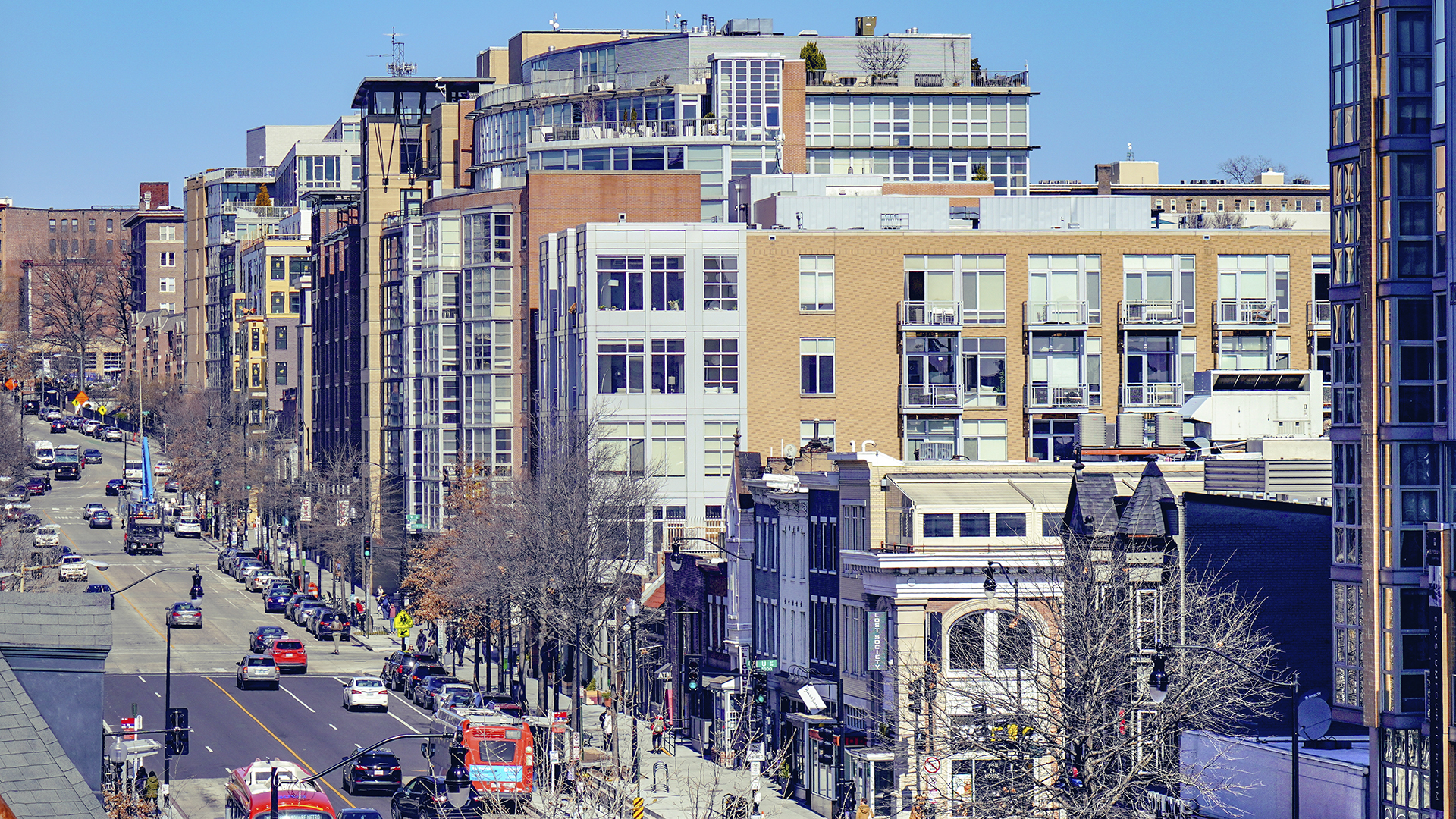
Objective B:
Traveling through the city is convenient
The convenience of travel by sustainable transport options (public transport or available bike-share service) is crucial to equitable mobility for all, including those commuting to work or school, traveling for leisure, or accessing essential or specialized services in the city.
What it means for babies, toddlers, and caregivers:
Having multiple healthy and convenient transport options within a walkable distance gives caregivers more flexibility for travel that best suits different types of trips. This enables easier, more efficient, and less stressful travel with toddlers and babies. Bikeshare systems should accommodate the needs of caregivers and feature child bike seats, baskets, and potentially cargo bicycles or tricycles.
Metrics:
Transit Options can include
- Additional transit options including regular transit lines or routes, and frequent transit modes if the transit line regularly operates from 7 a.m. to 10 p.m., with a service frequency of 20 minutes or less
- A dense public bikesharing system
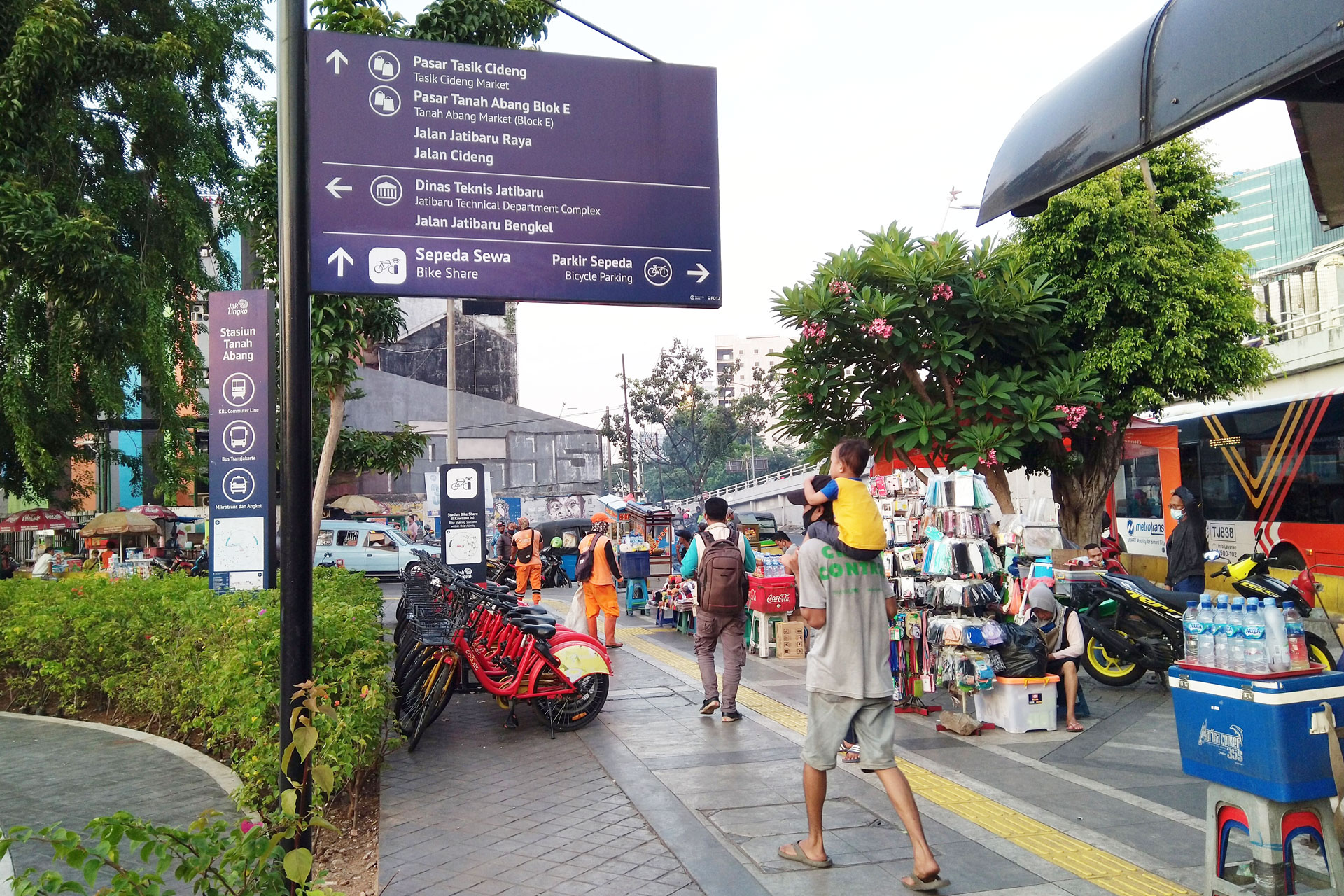

Principle 8: Shift
Space for motor vehicles is reduced to promote play, interaction, and health.

When walking, cycling and transit are prioritized, less space is needed for personal motor vehicles. And conversely, the less space for motor vehicles, the more space there is to prioritize walking, cycling, and transit.
Babies and toddlers suffer from exposure to noxious motor vehicle fumes and noises more than adults because of their developing organs, more rapid breathing, and their closer proximity to the ground, where fumes exit exhaust pipes. Young children are also more vulnerable to crashes whether they walk, are carried by, or cycle with their caregivers. Shifting space from cars and dedicating it to public spaces, activities, and sustainable modes of travel make neighborhoods and traveling safer and healthier for caregivers and their babies and toddlers.
Objective A:
The land occupied by motor vehicles is minimized
Minimizing off-street and on-street parking and driveways increases space for pedestrians and cyclists and boost cities with more vibrant, healthy, and enjoyable public spaces.
What it means for babies, toddlers, and caregivers:
Removing parking spaces gives the opportunity to create more seating areas, expanded walkways, and bike lanes that everyone can enjoy. Less parking means fewer cars accessing buildings and areas, and in turn less air pollution that is detrimental to a child's healthy development. When these barriers are removed, all individuals, especially the most vulnerable users including caregivers, toddlers, and babies, can walk confidently and safely.
Metrics:
Off-Street Parking is reduced when
- Parking structures or parking in buildings is less than 10% of the site area.
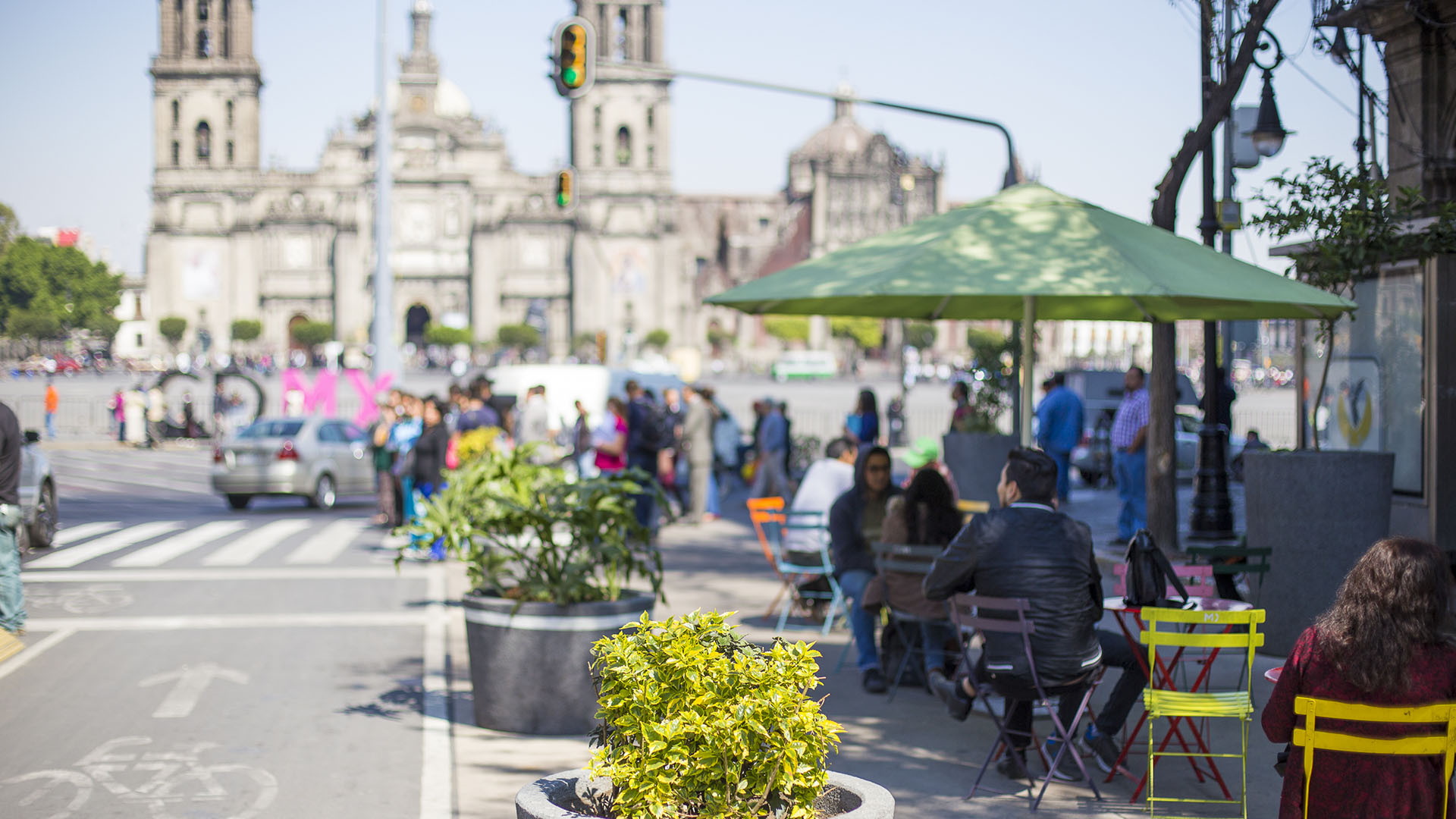
Driveway Density should include
- 2 or fewer driveways per 100 m of block frontage
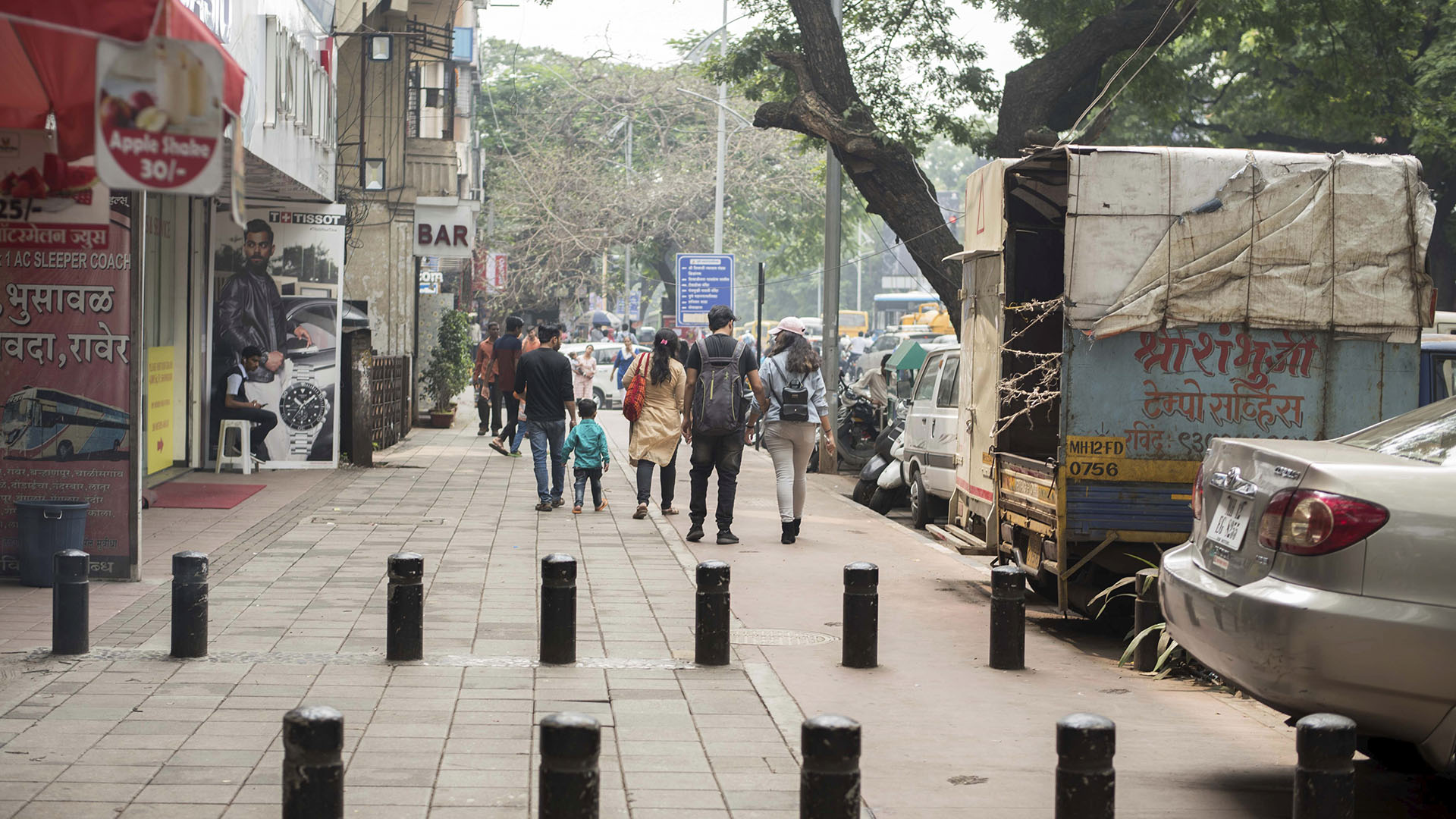
Roadway Area is minimized when
- Motor vehicle area occupies 15% or less of the site area
